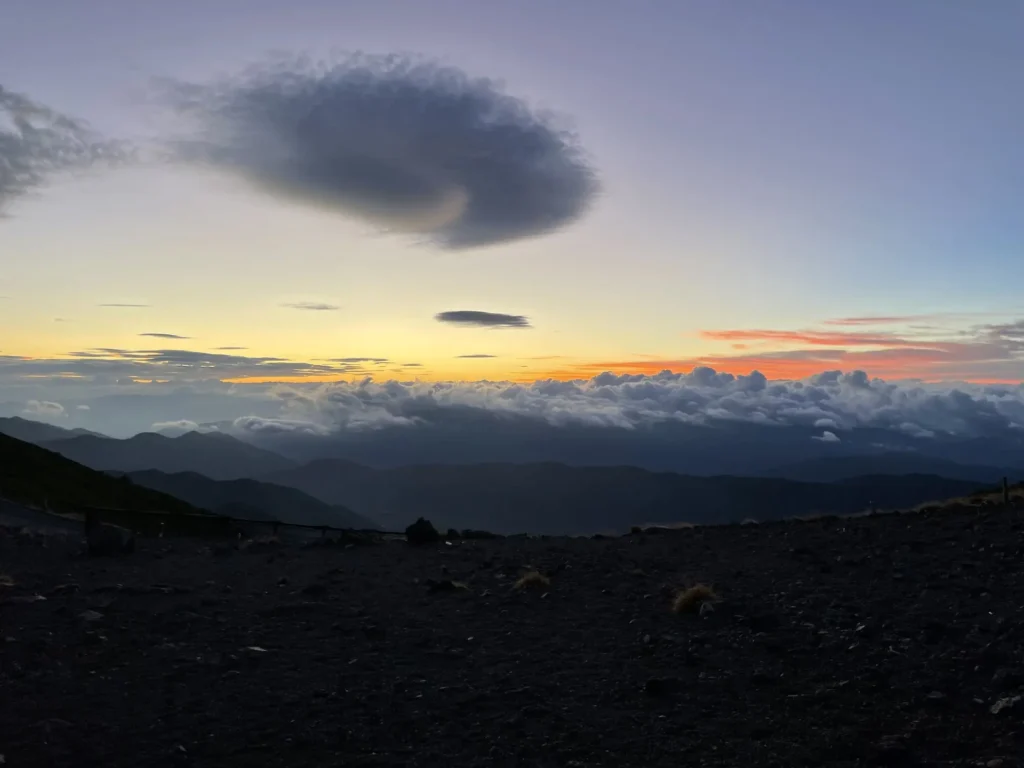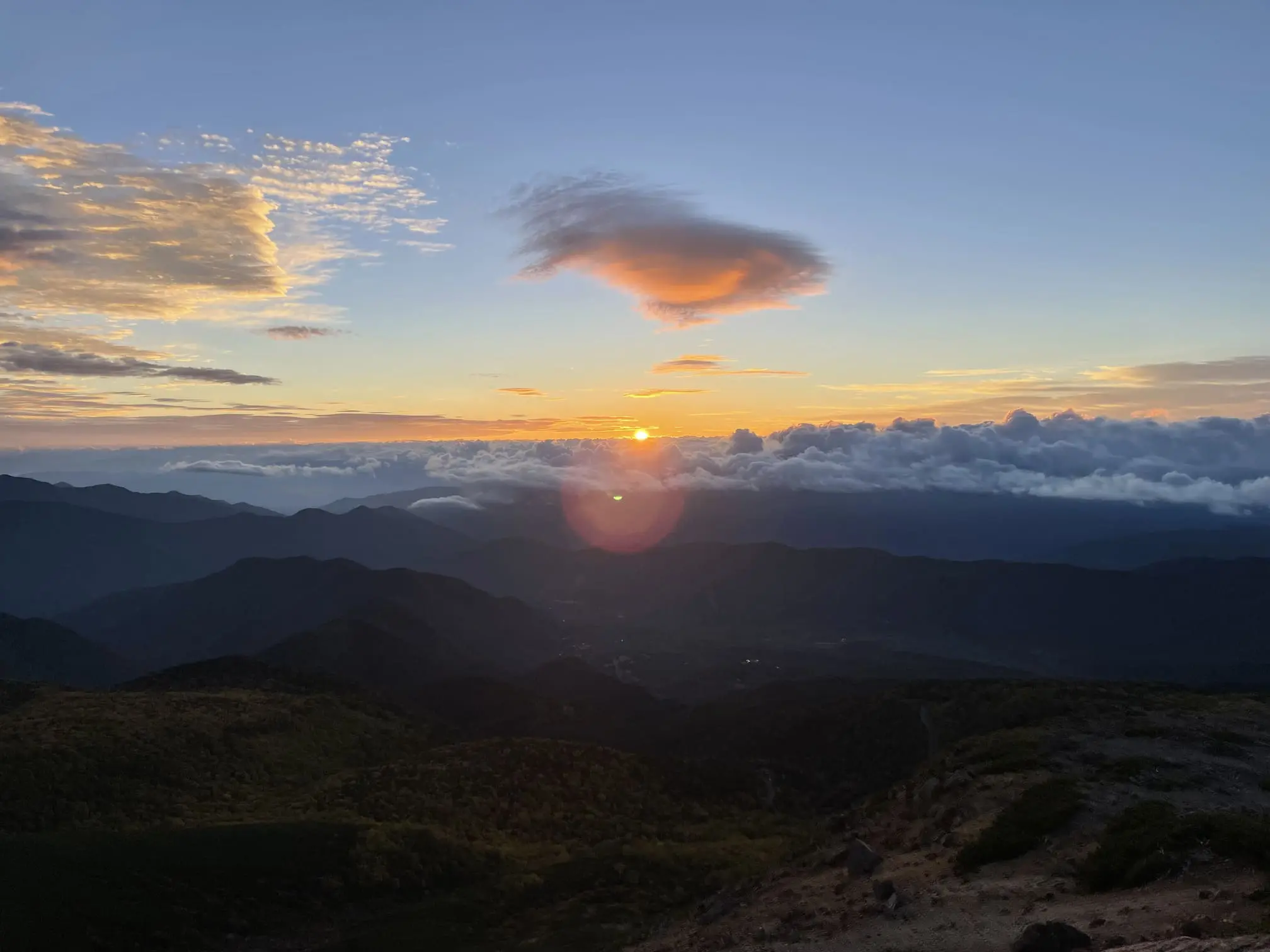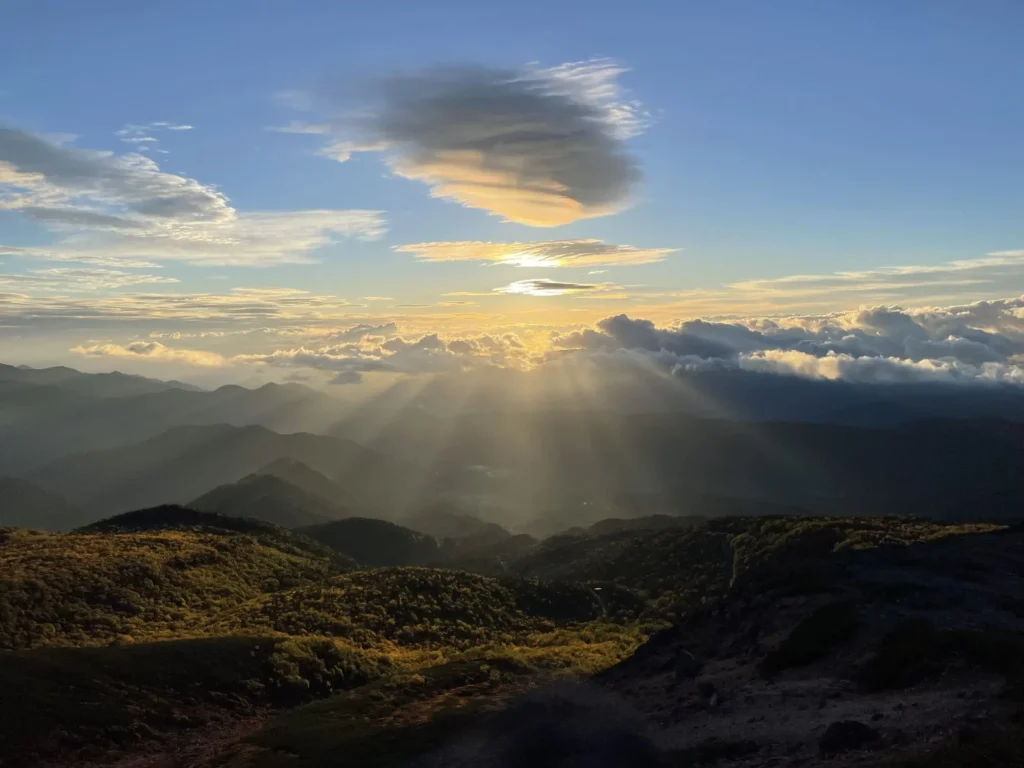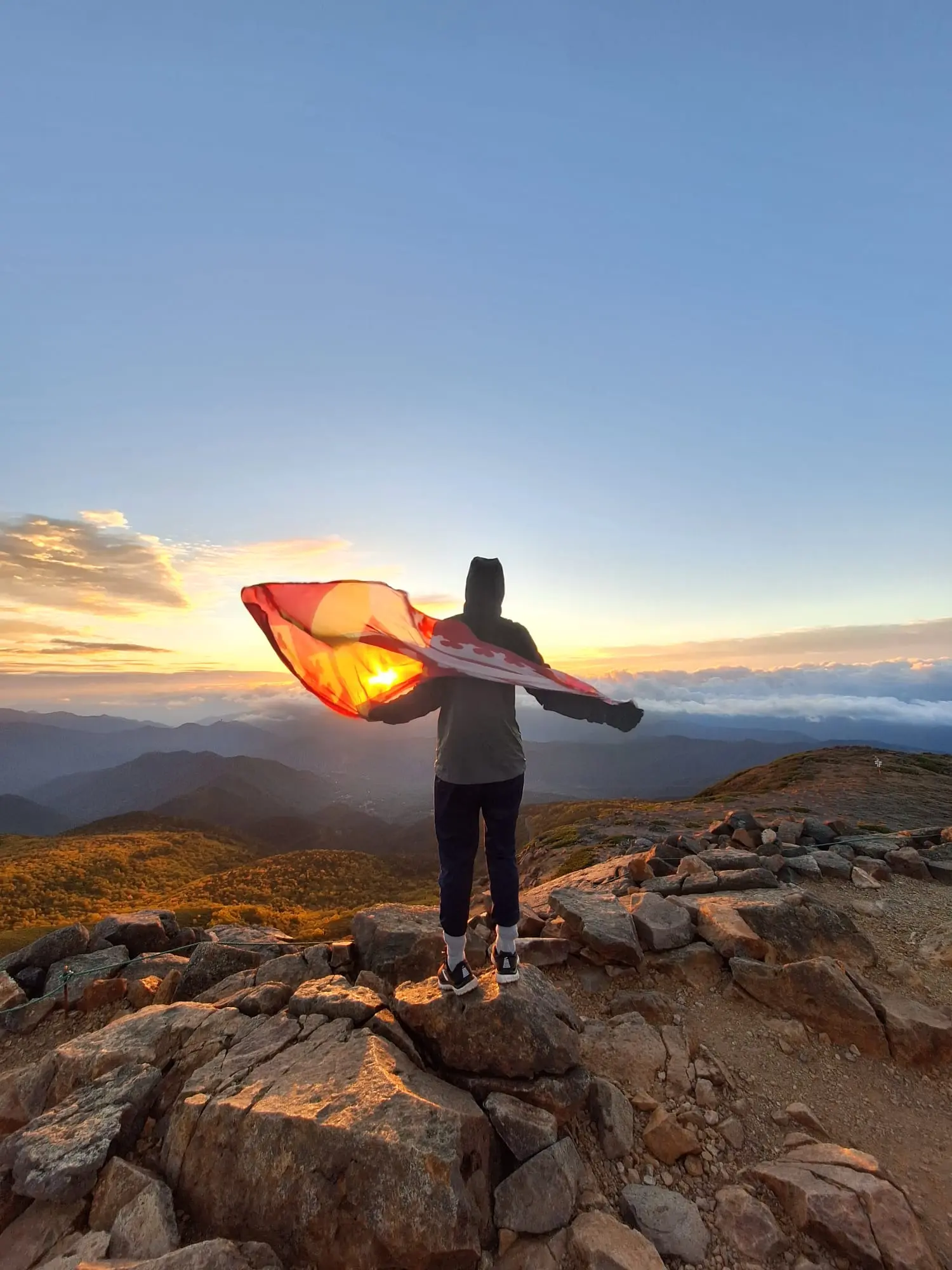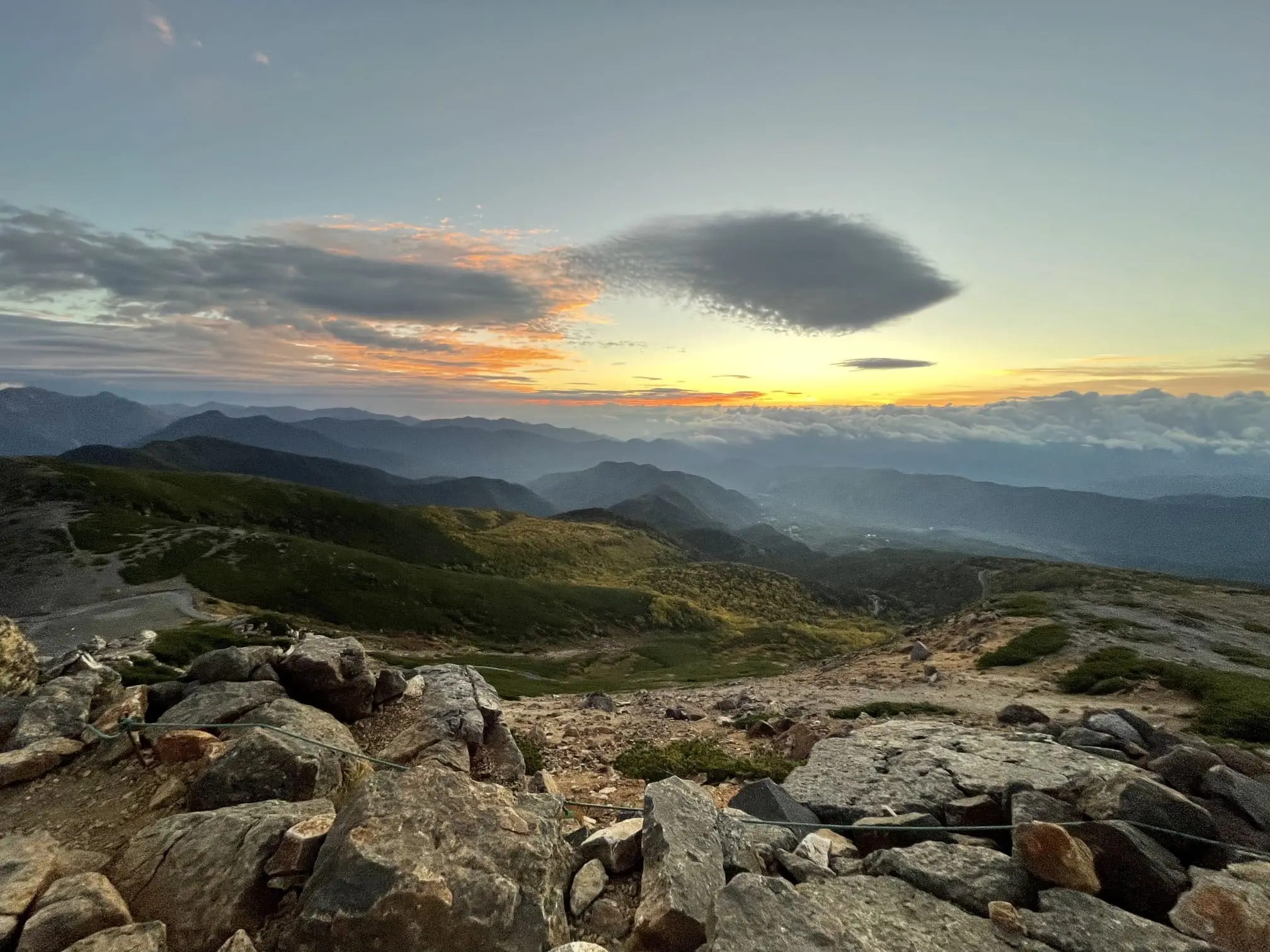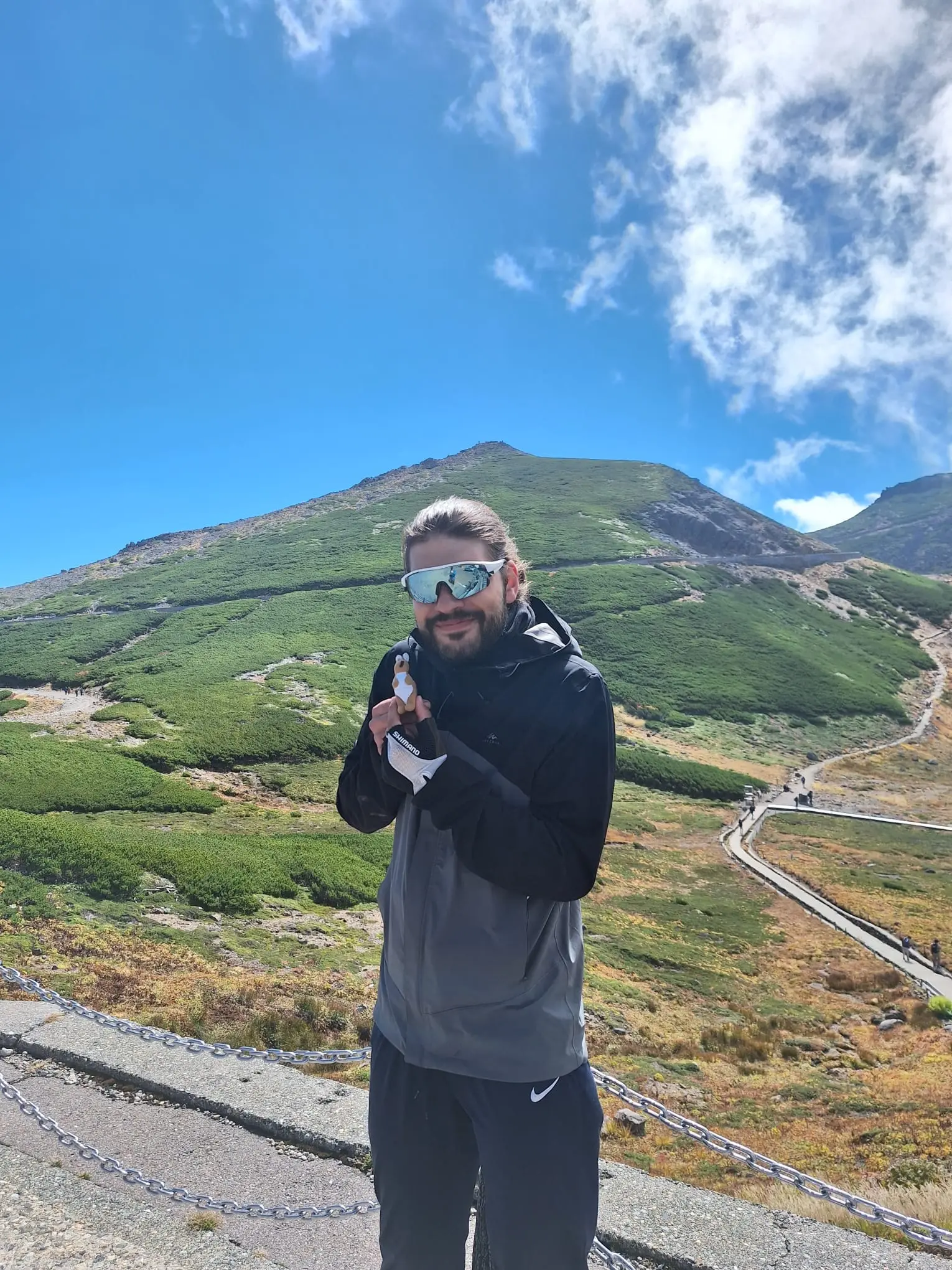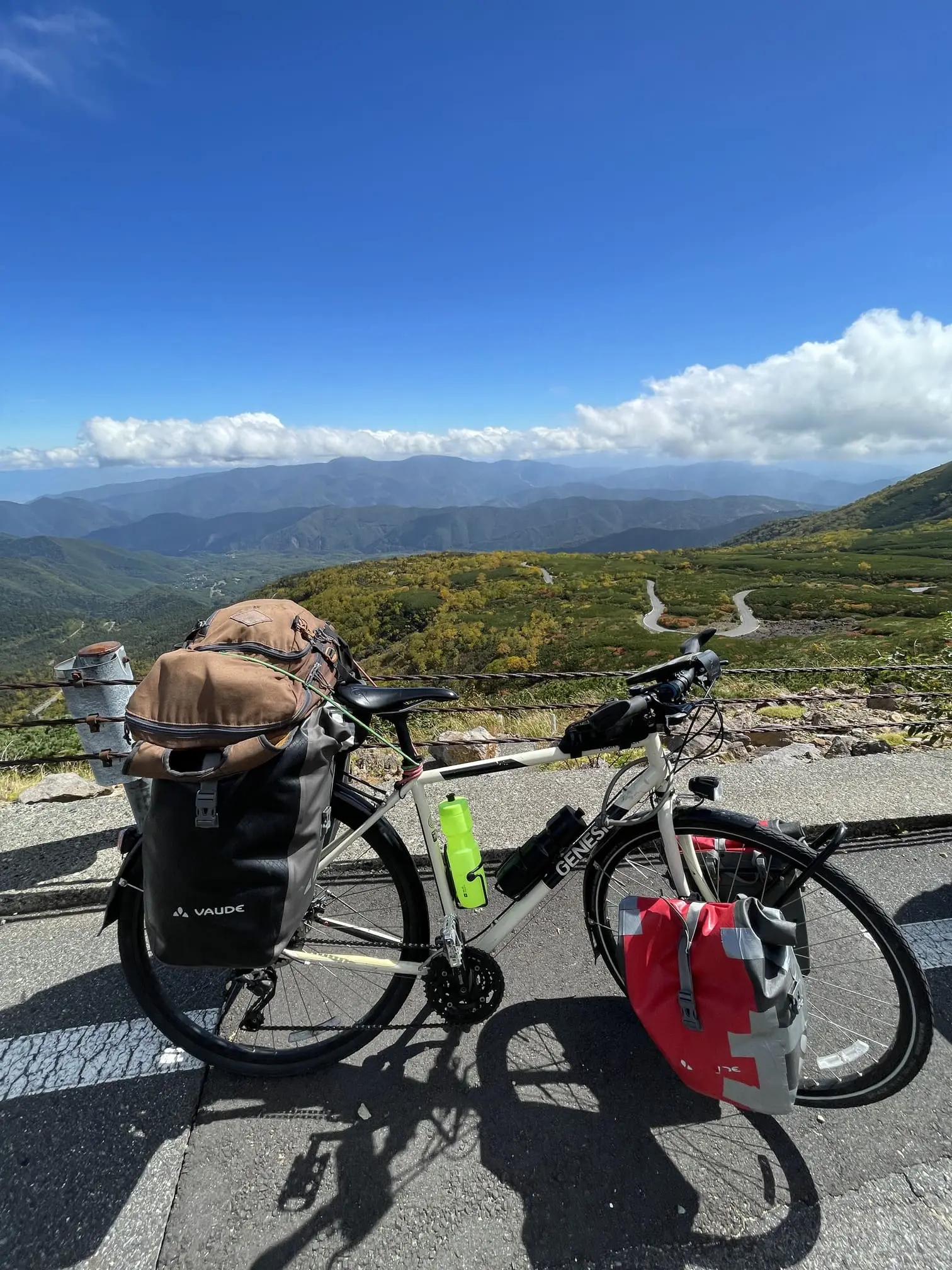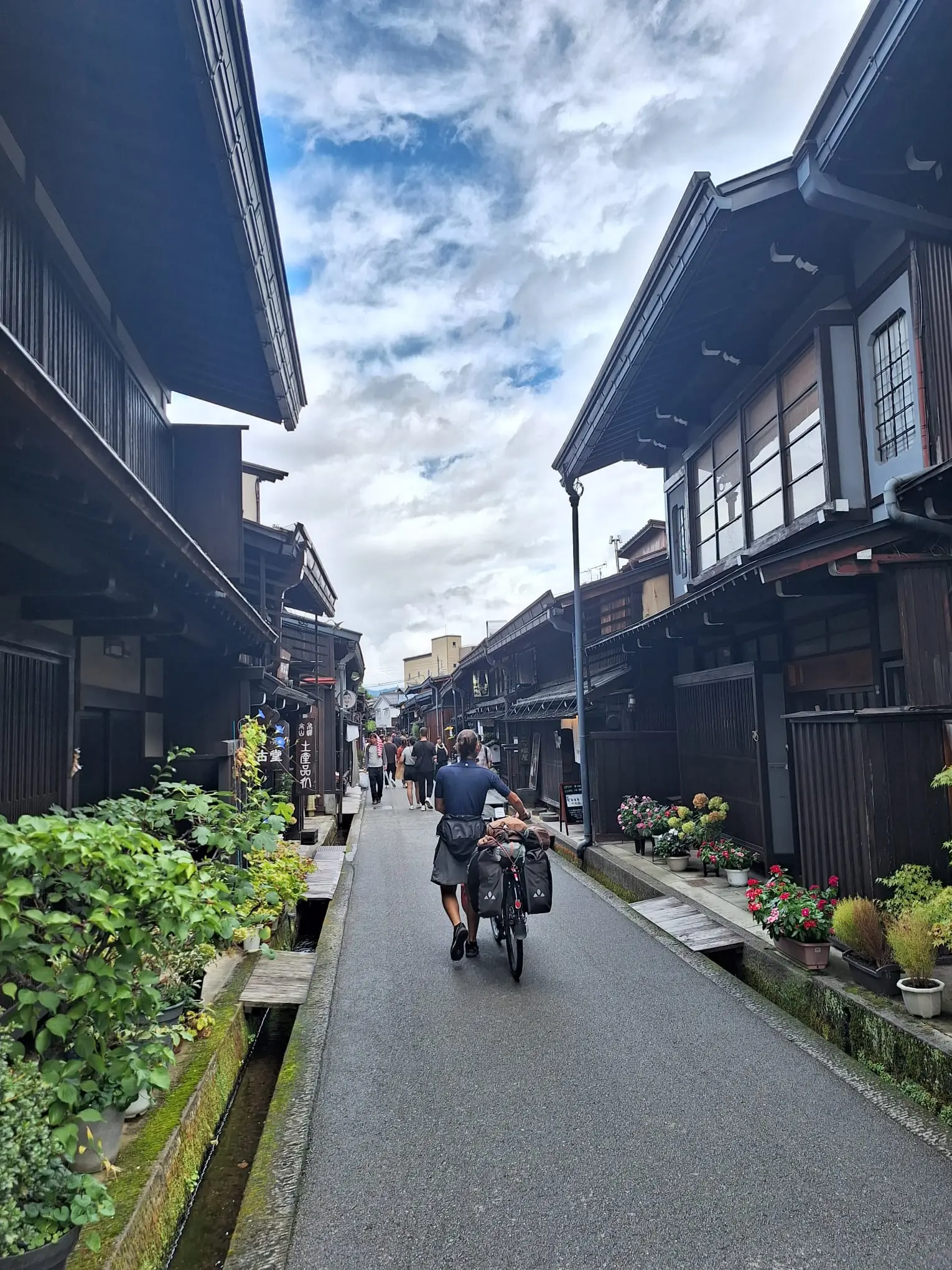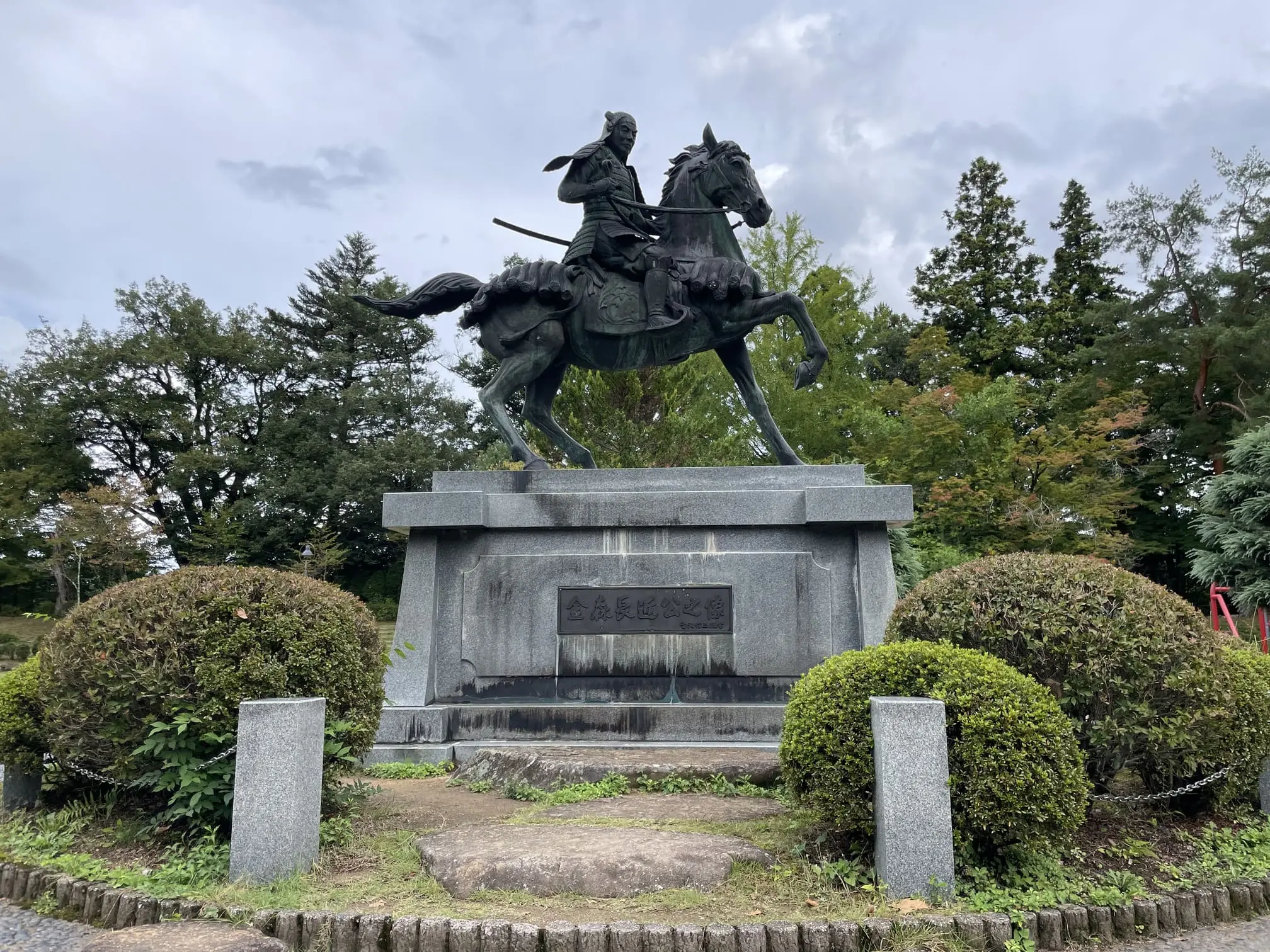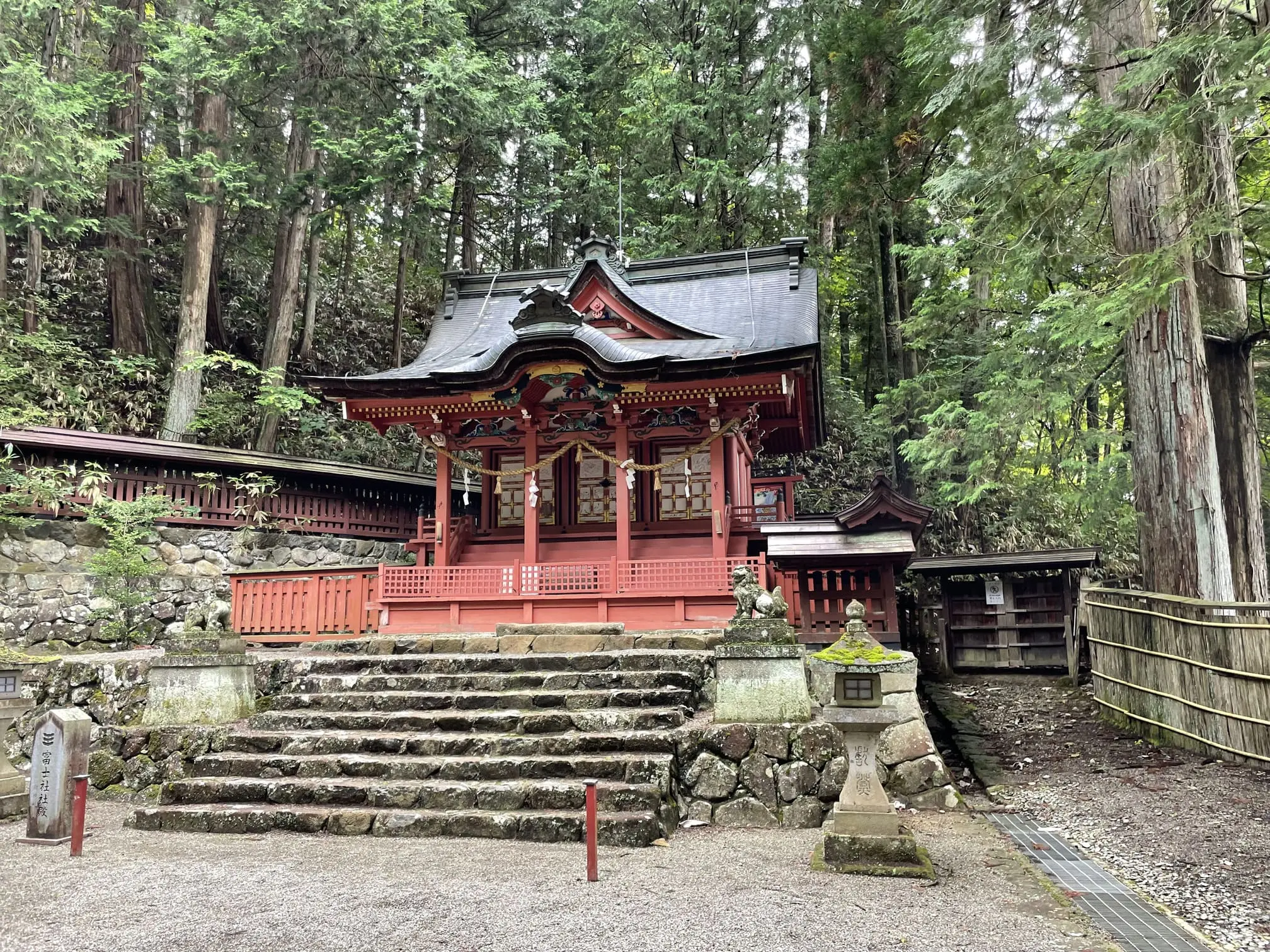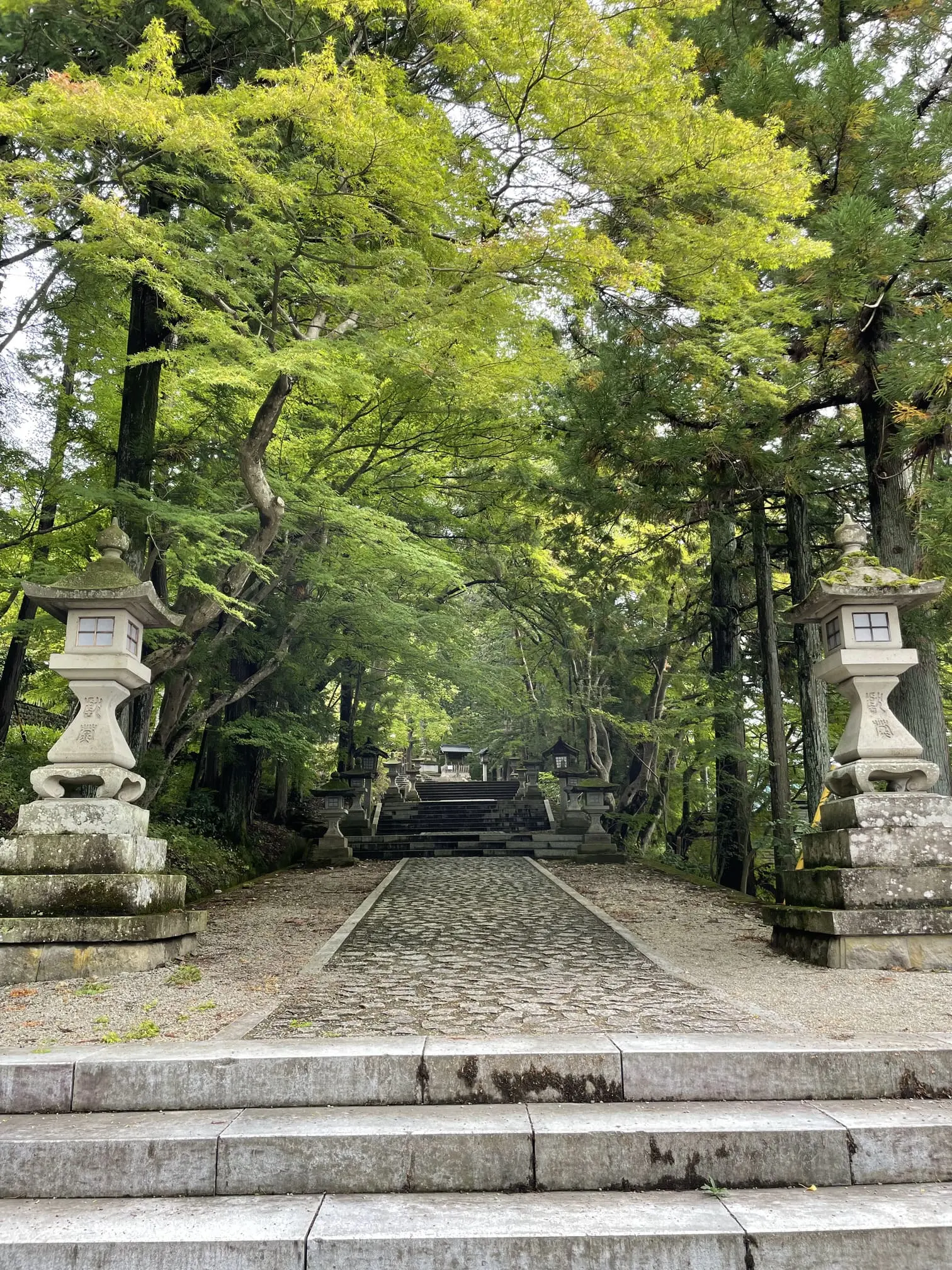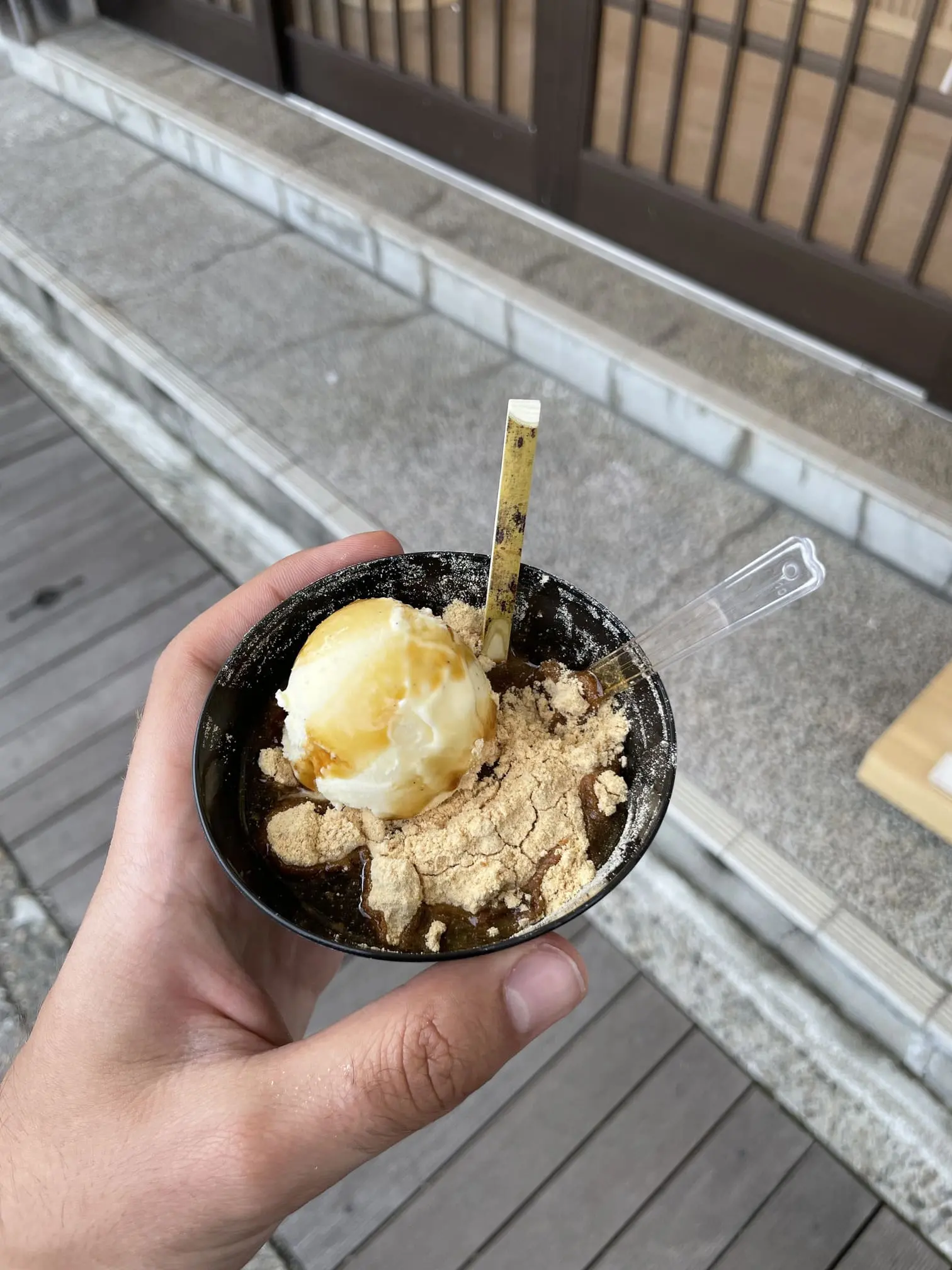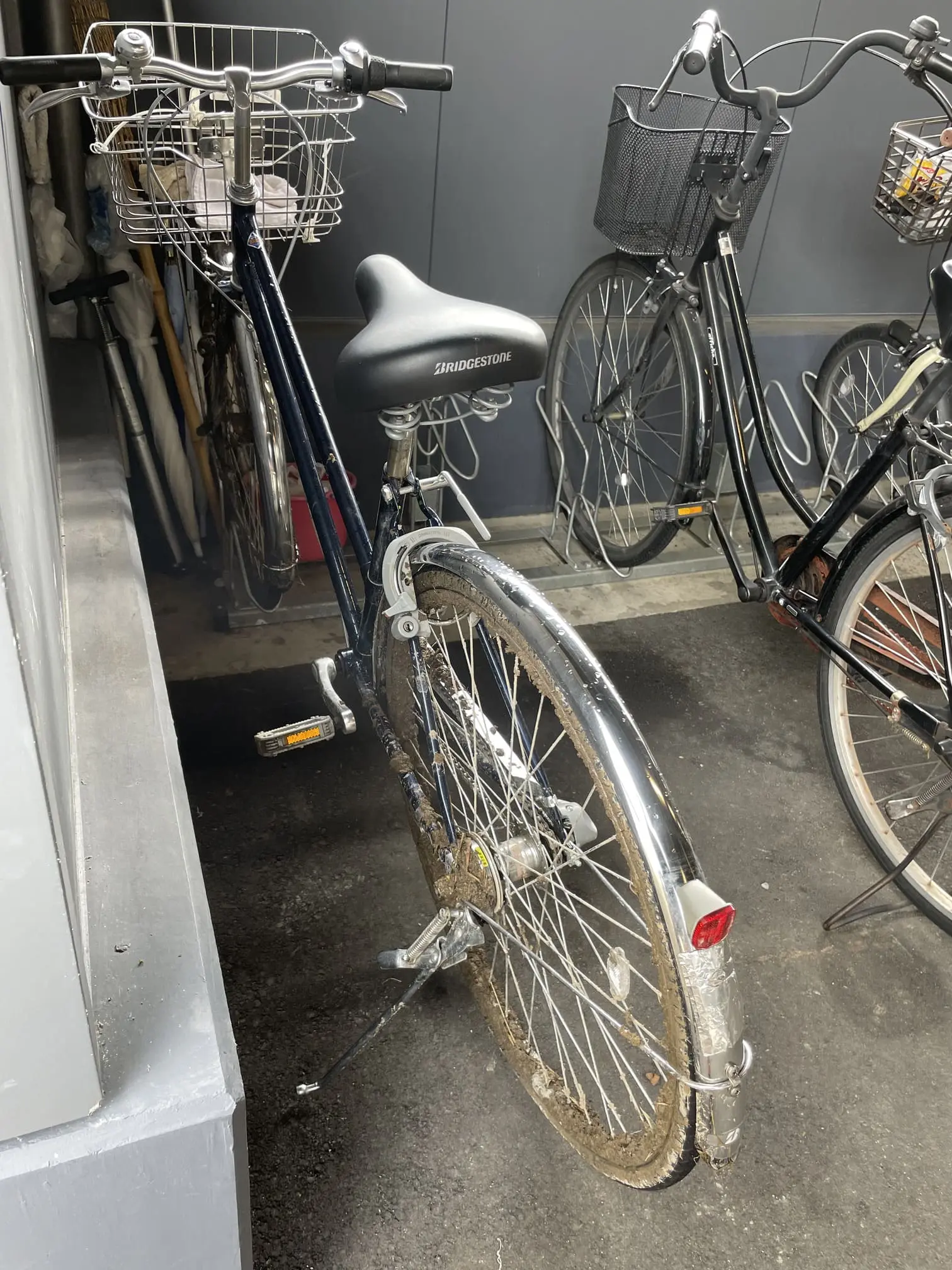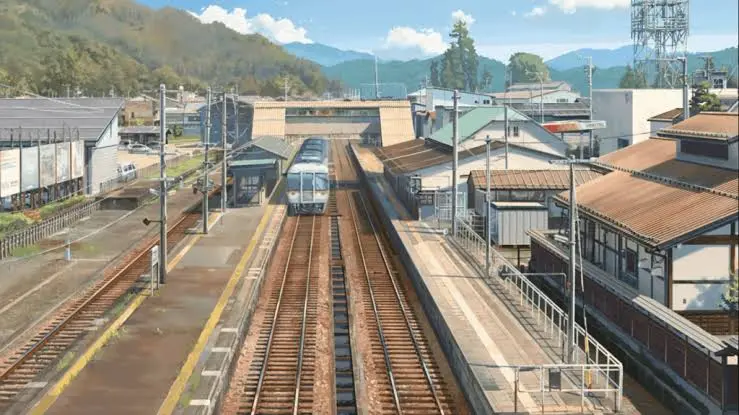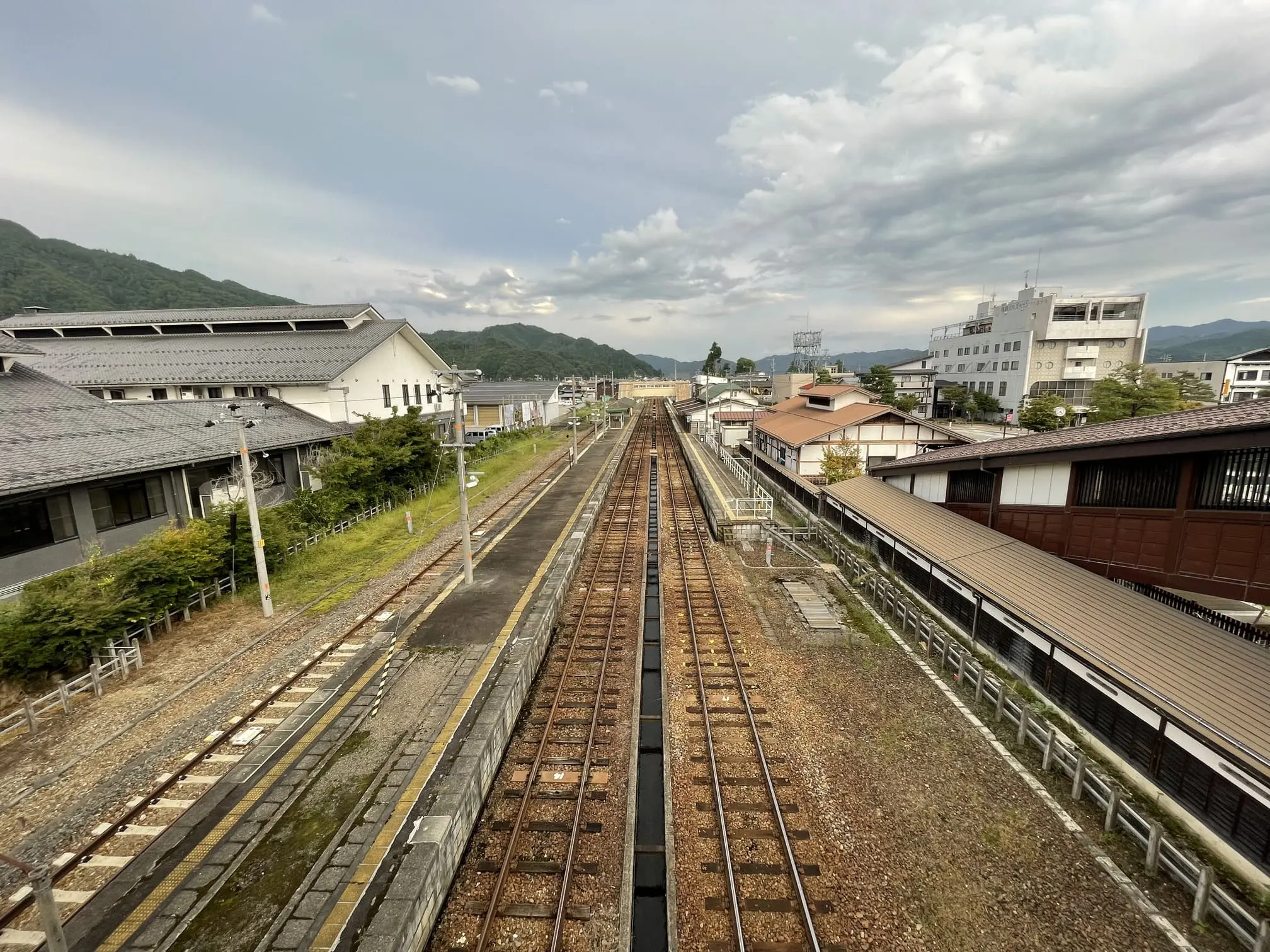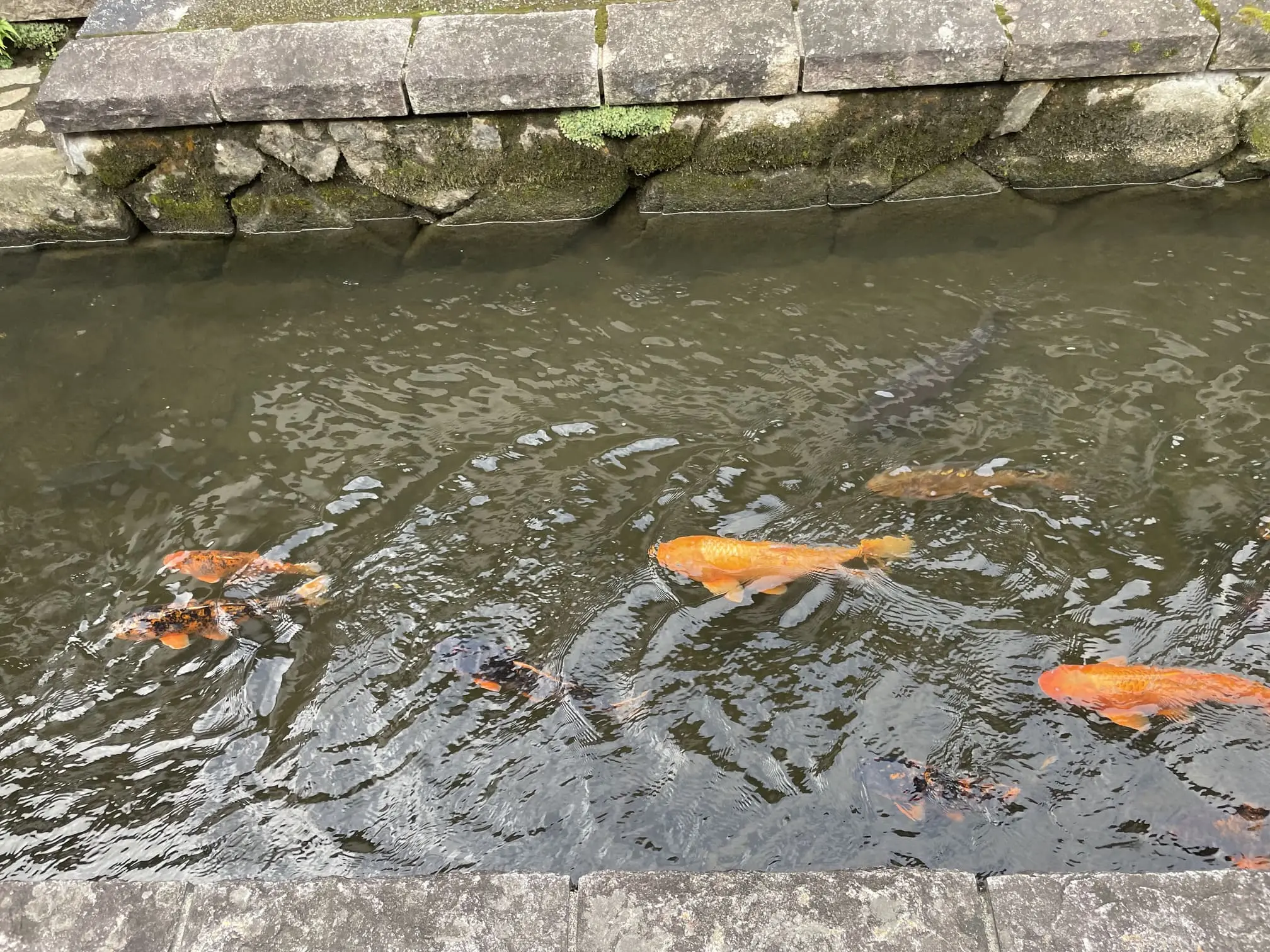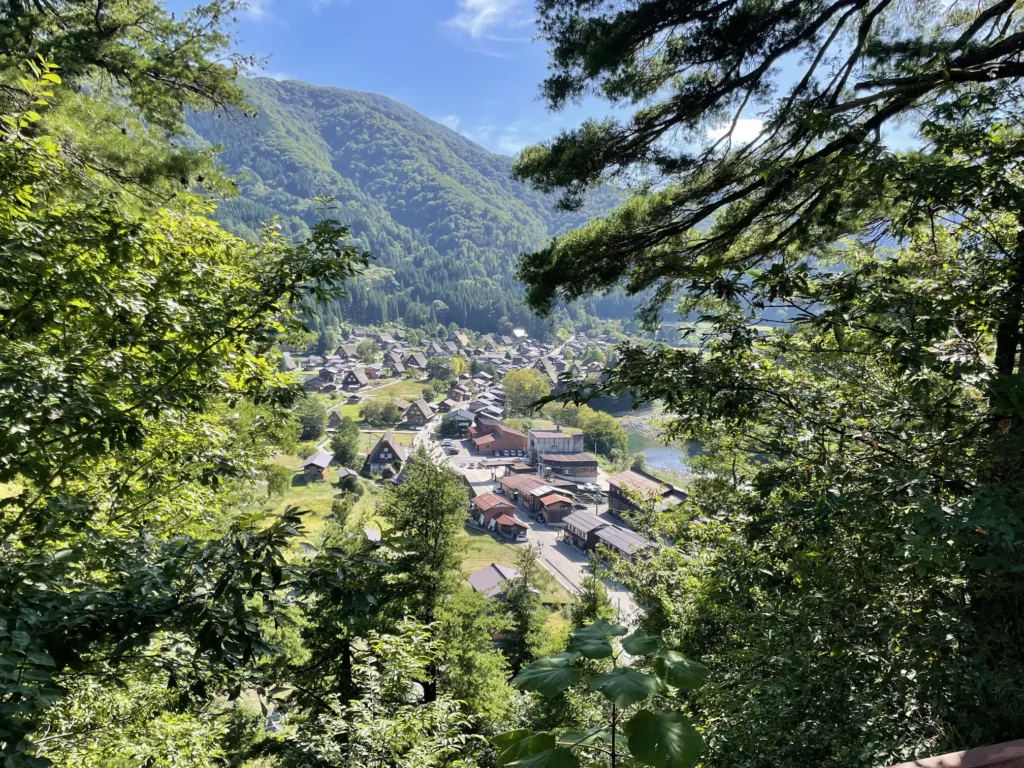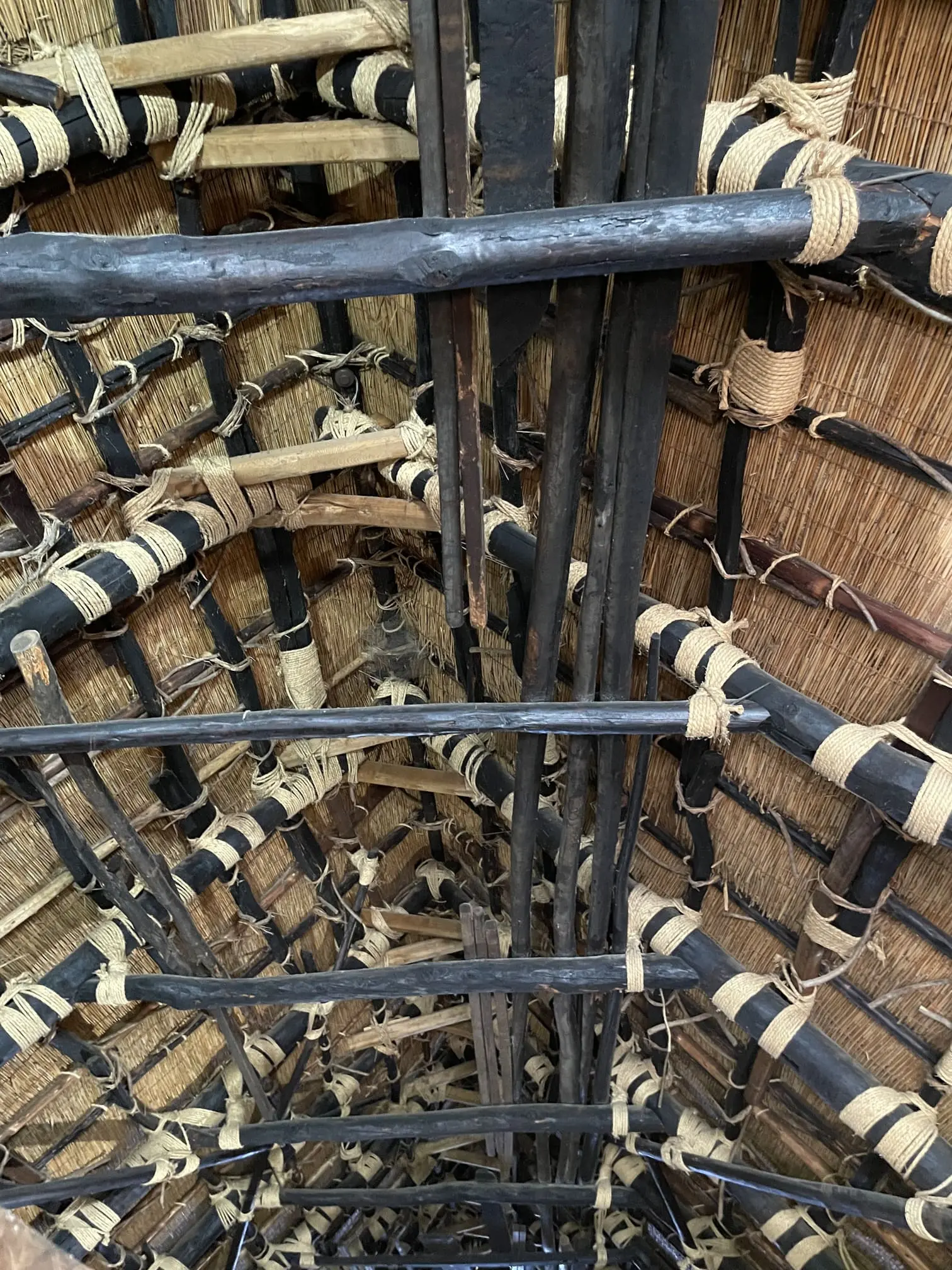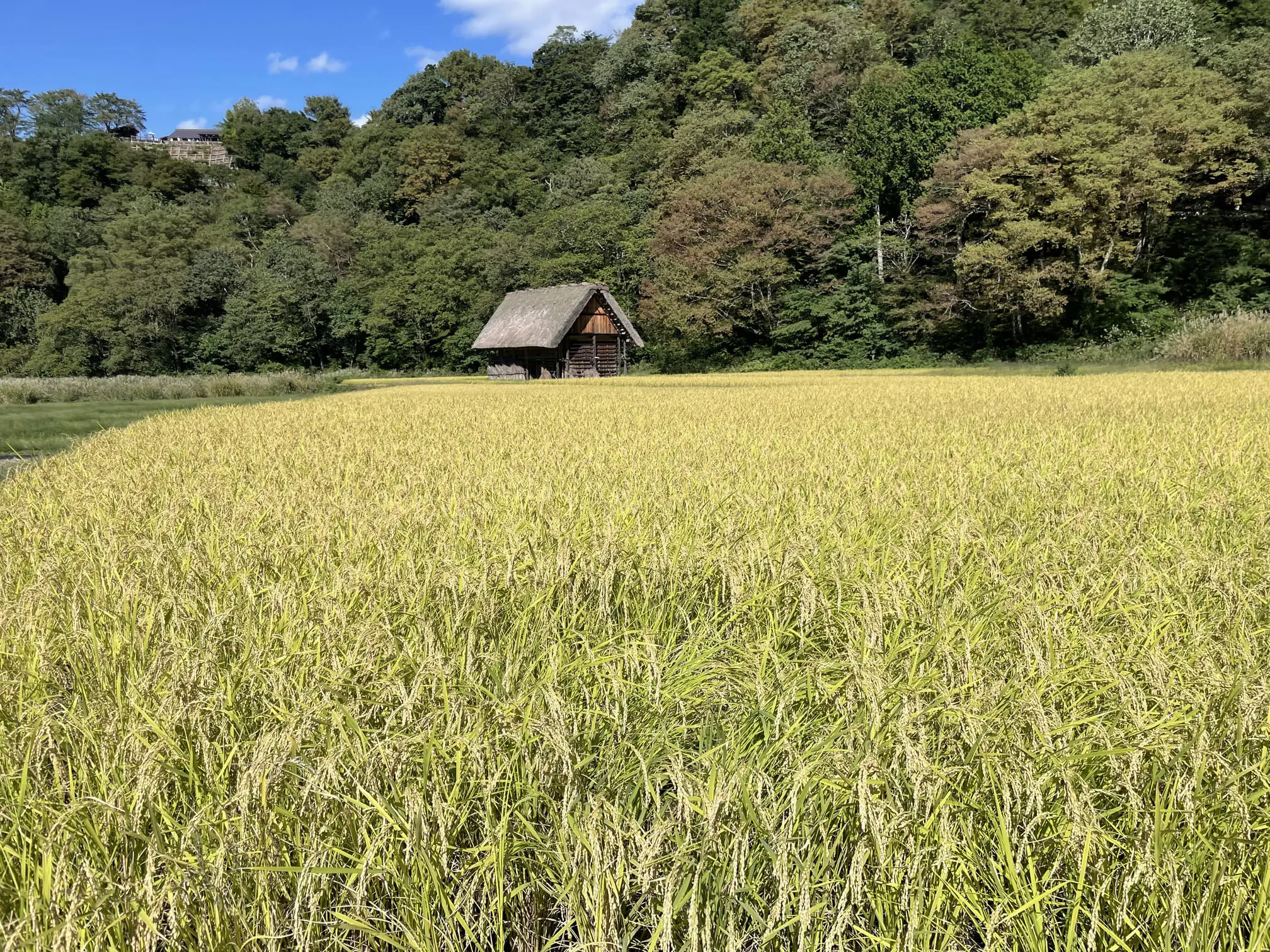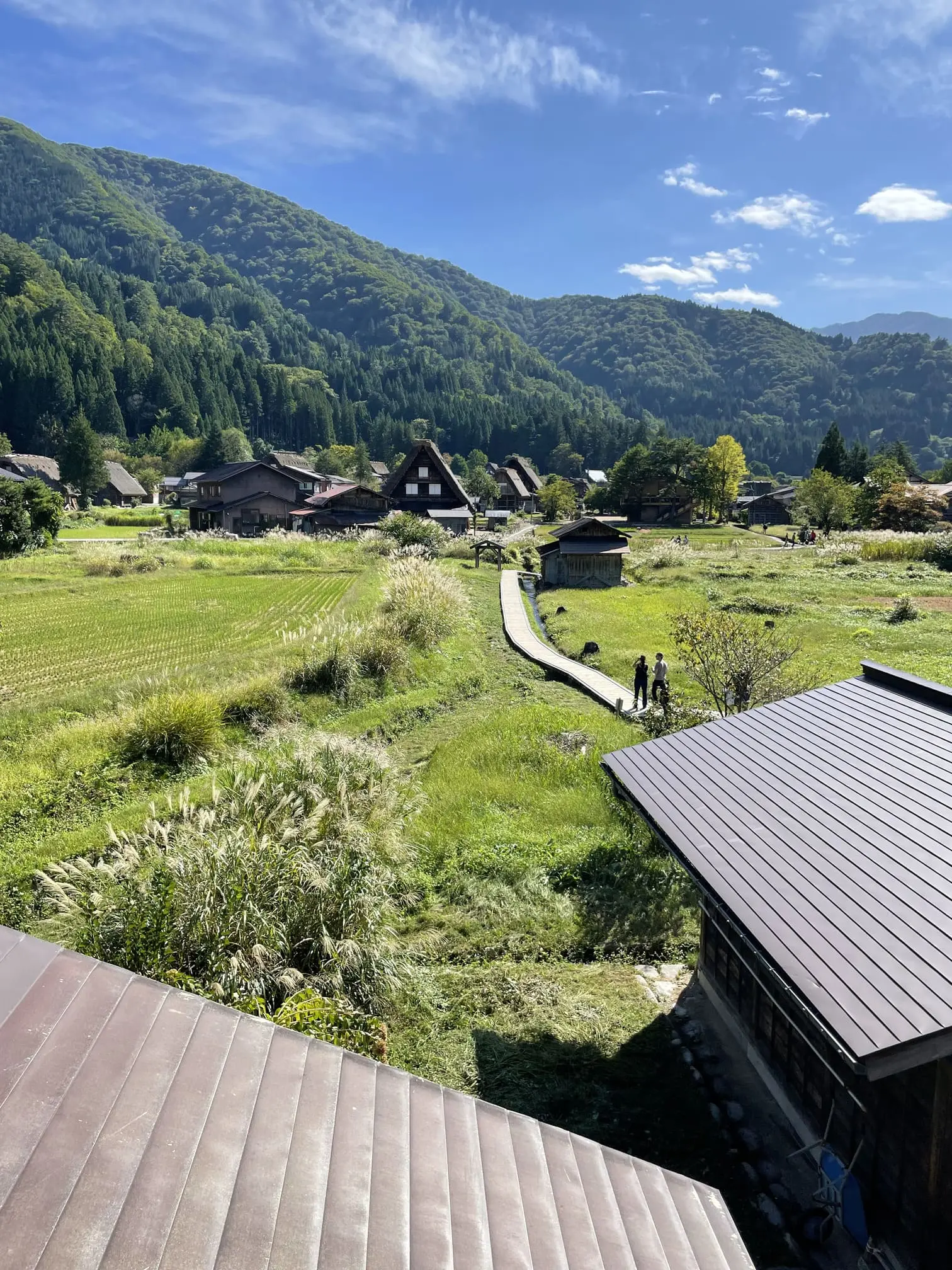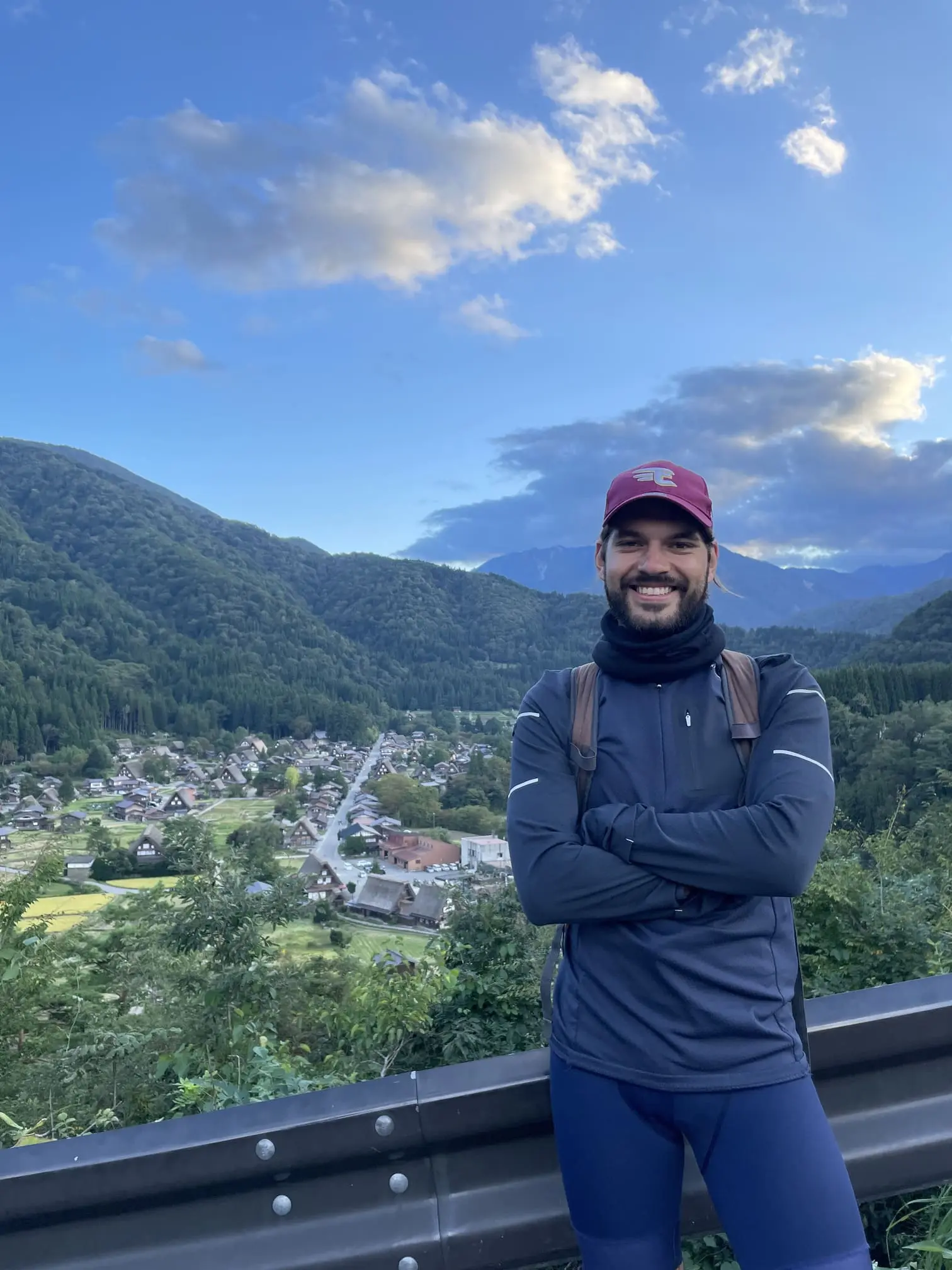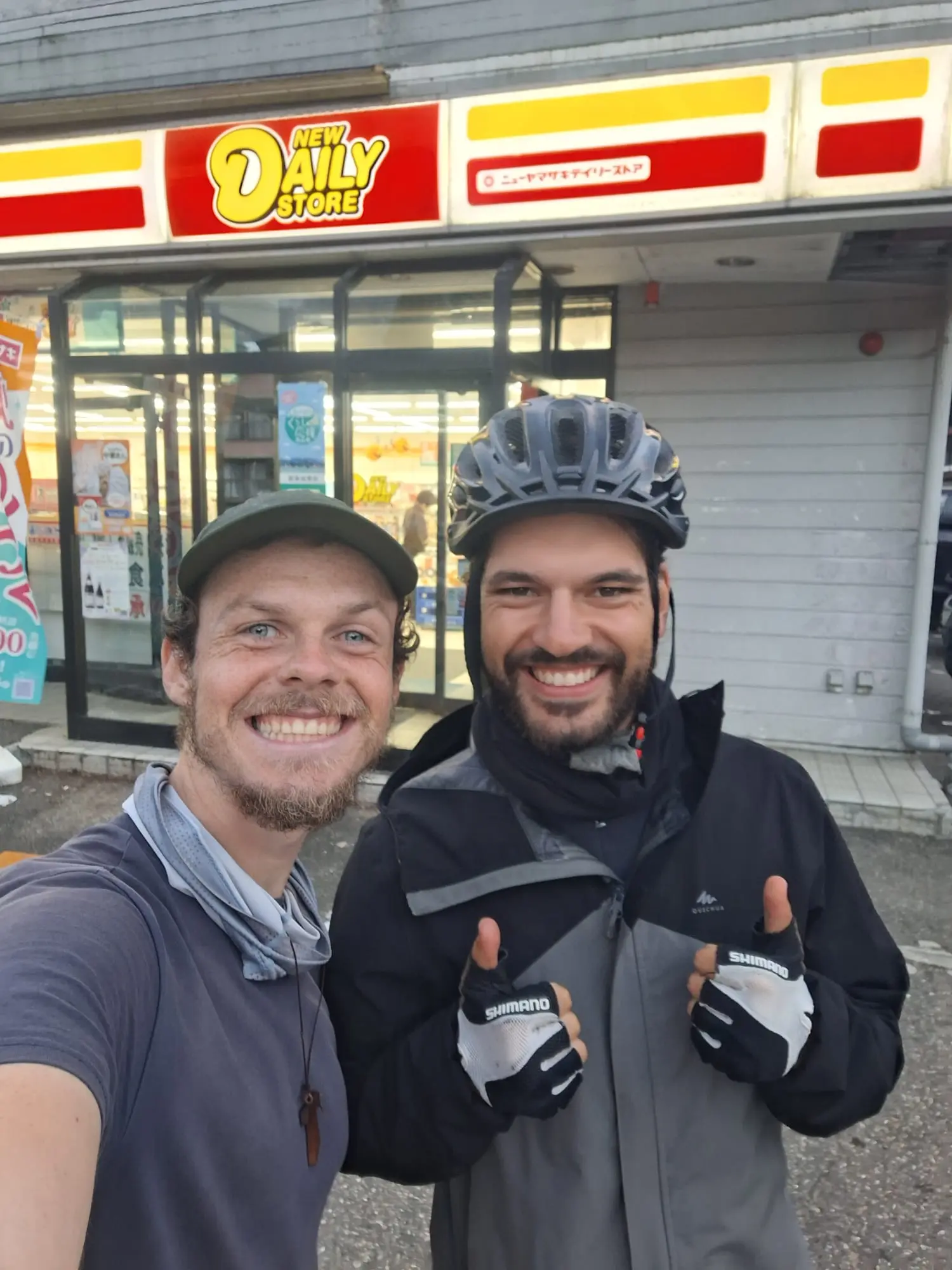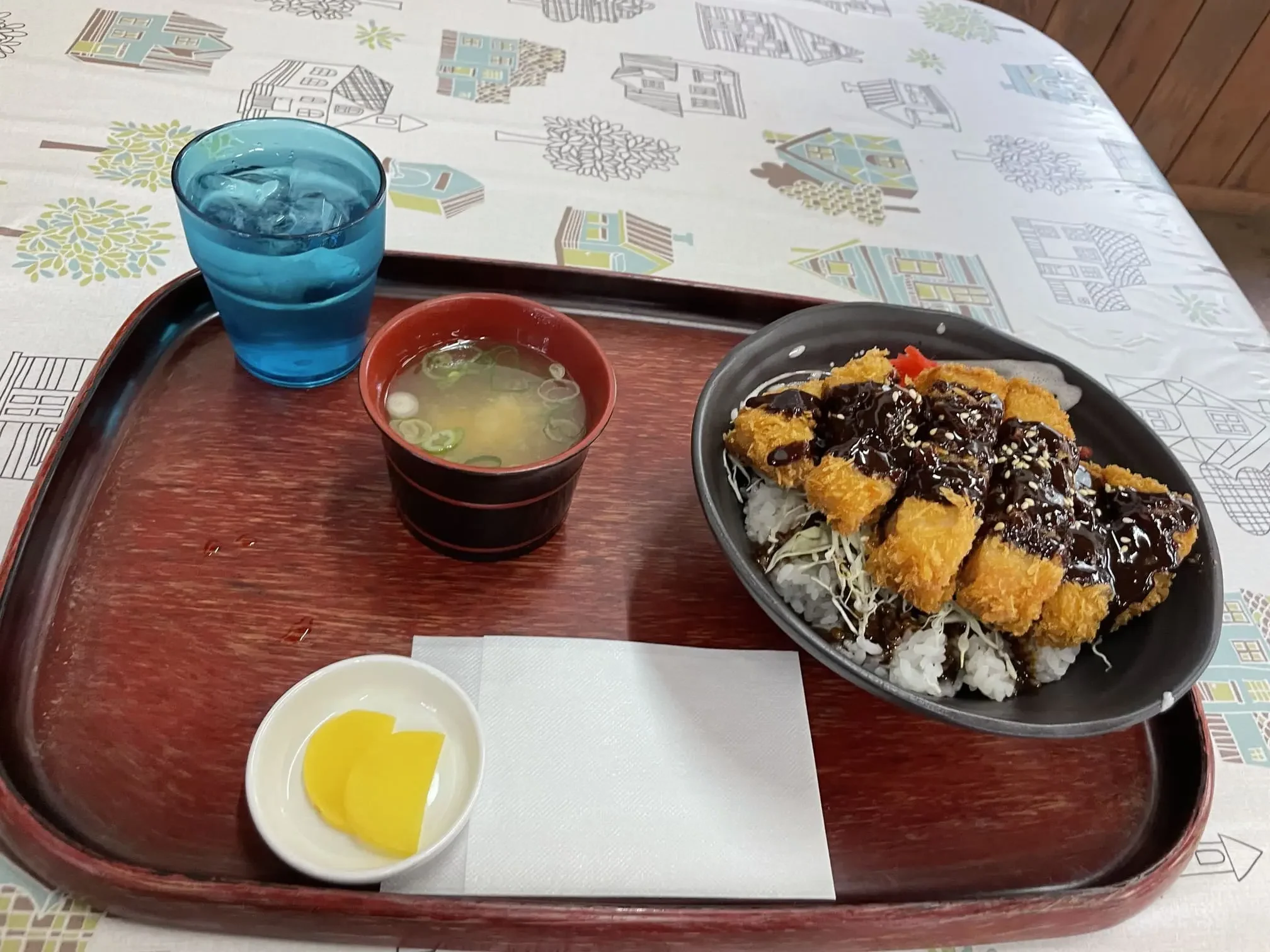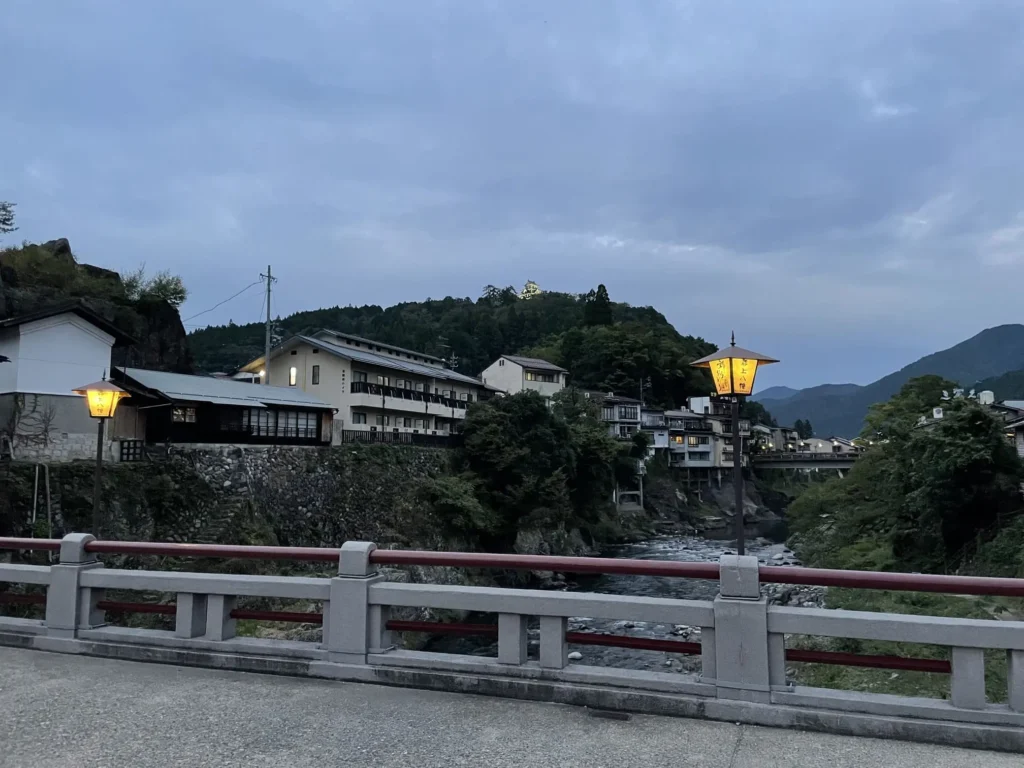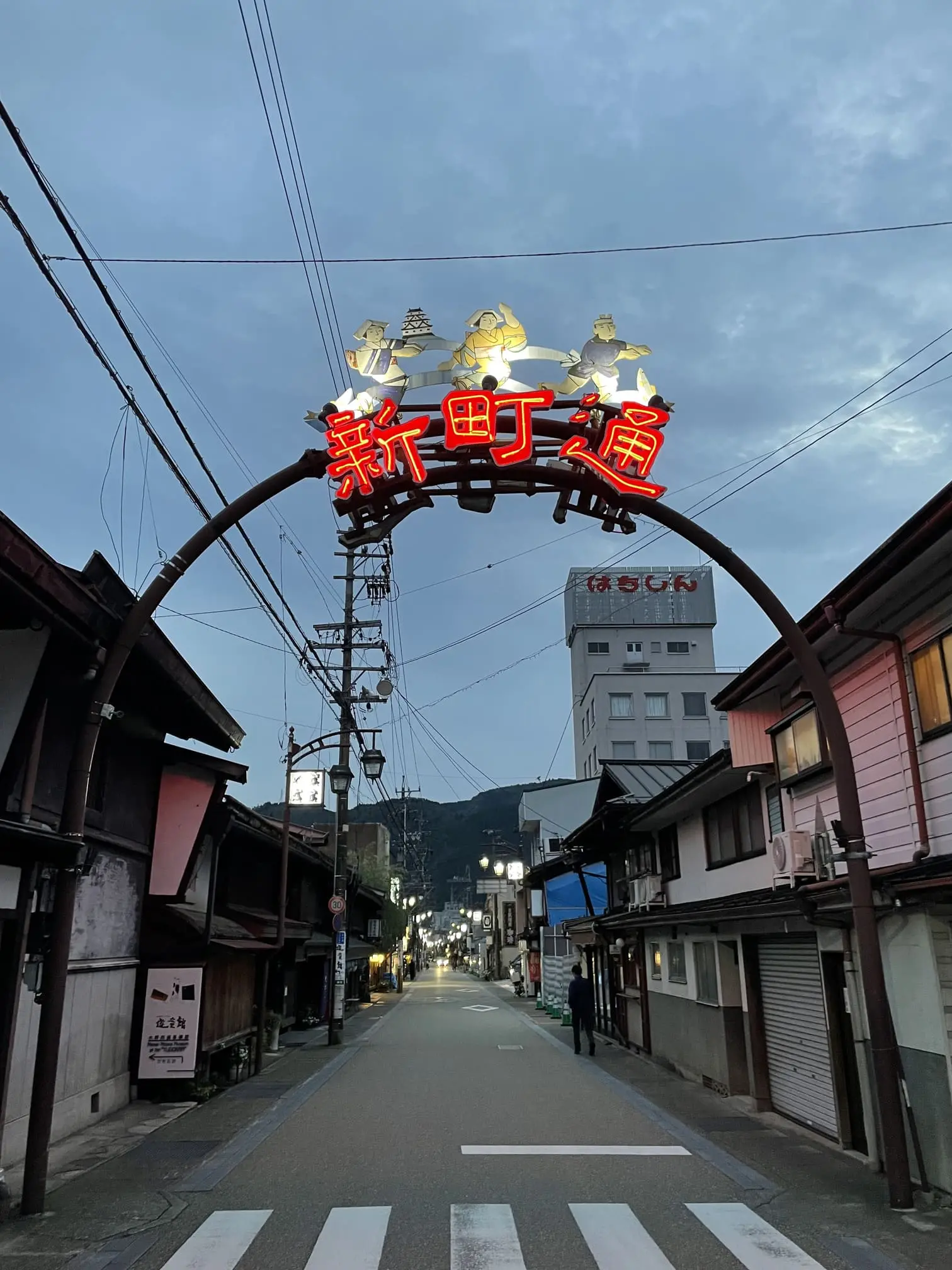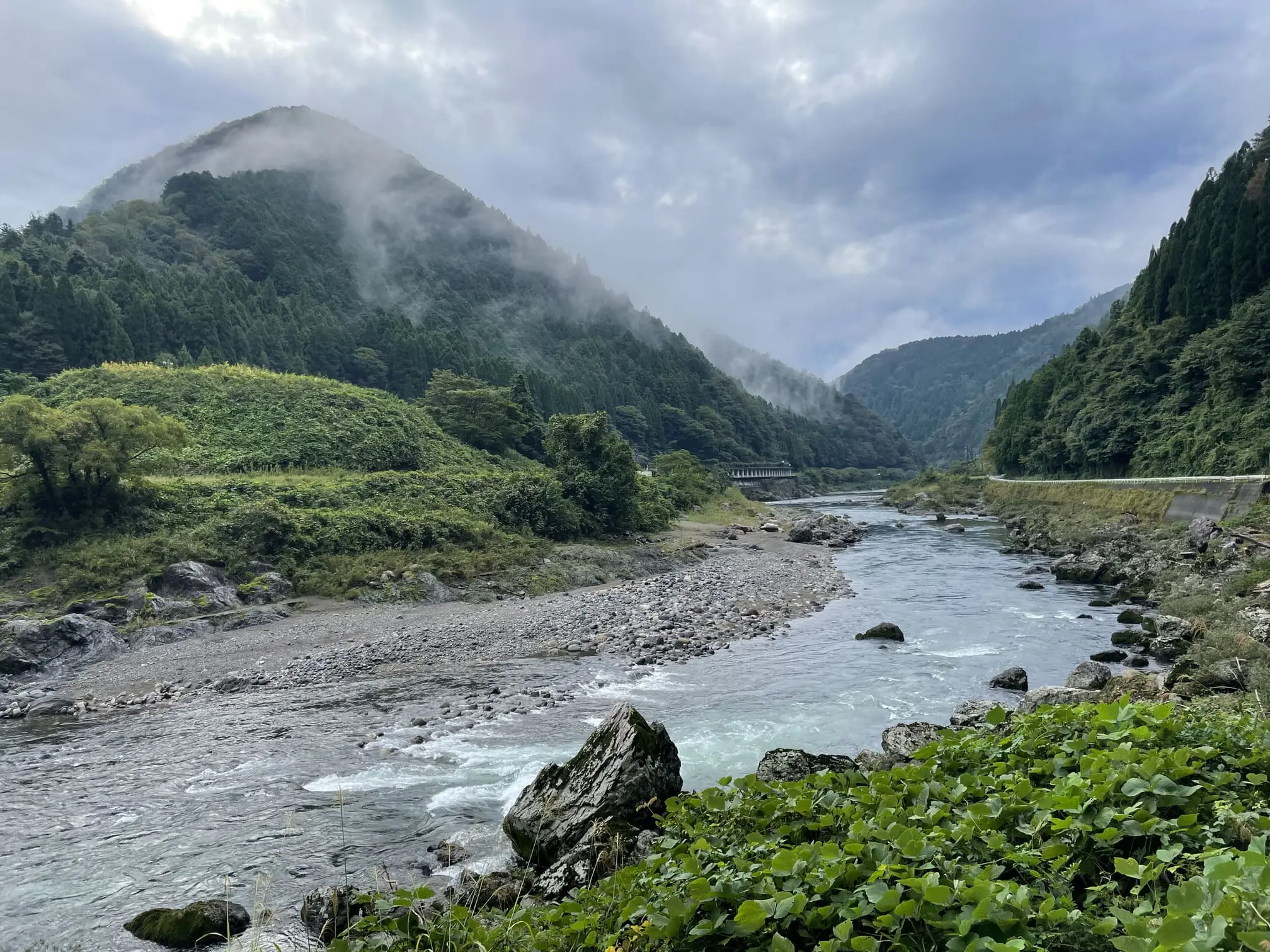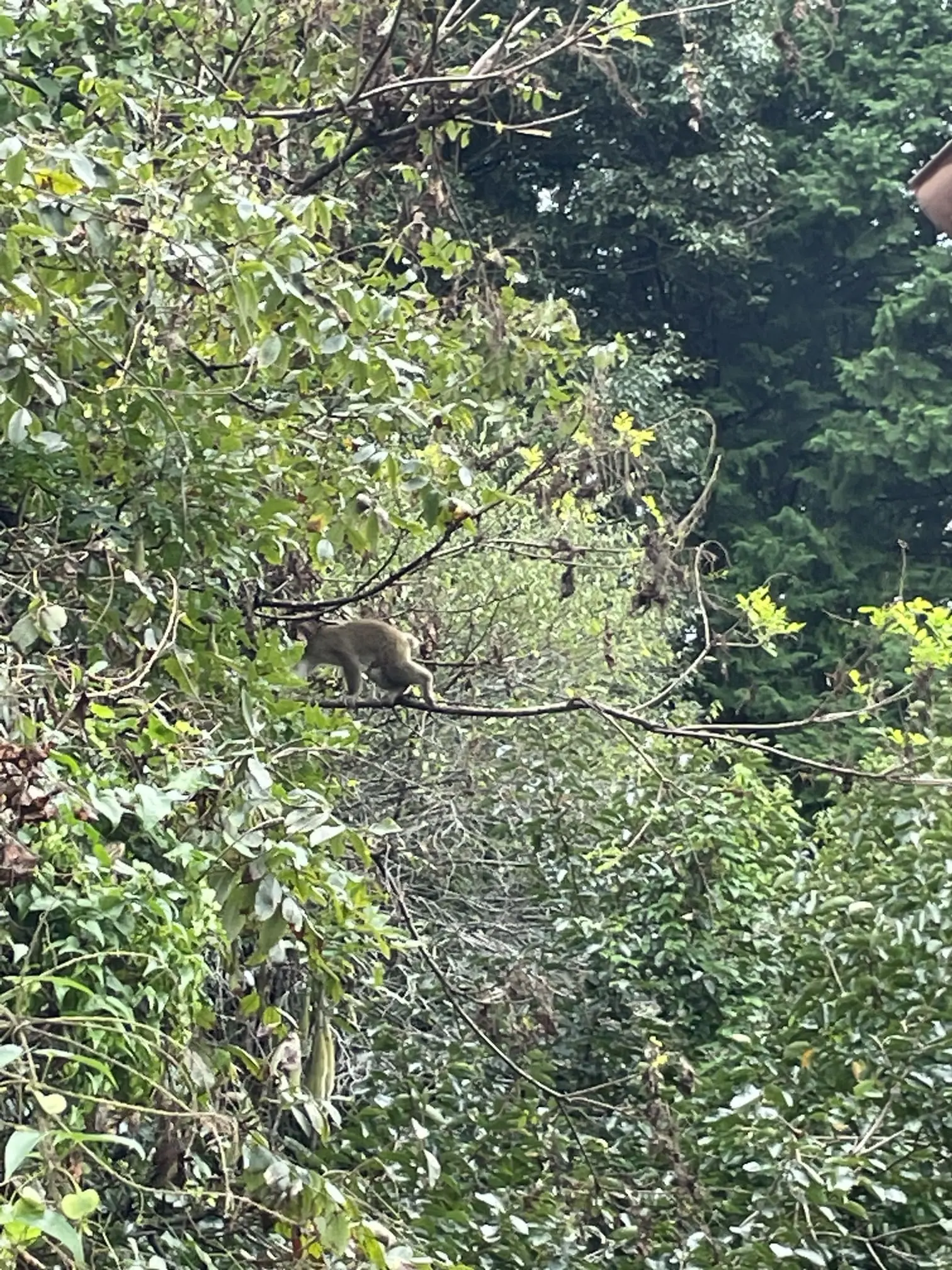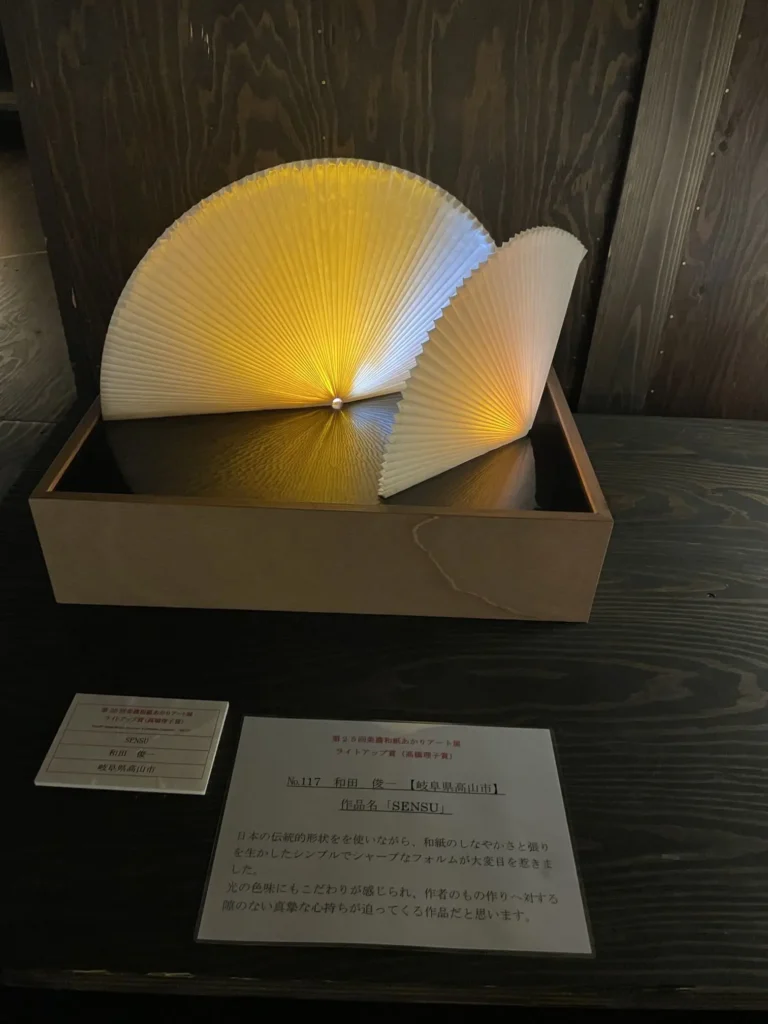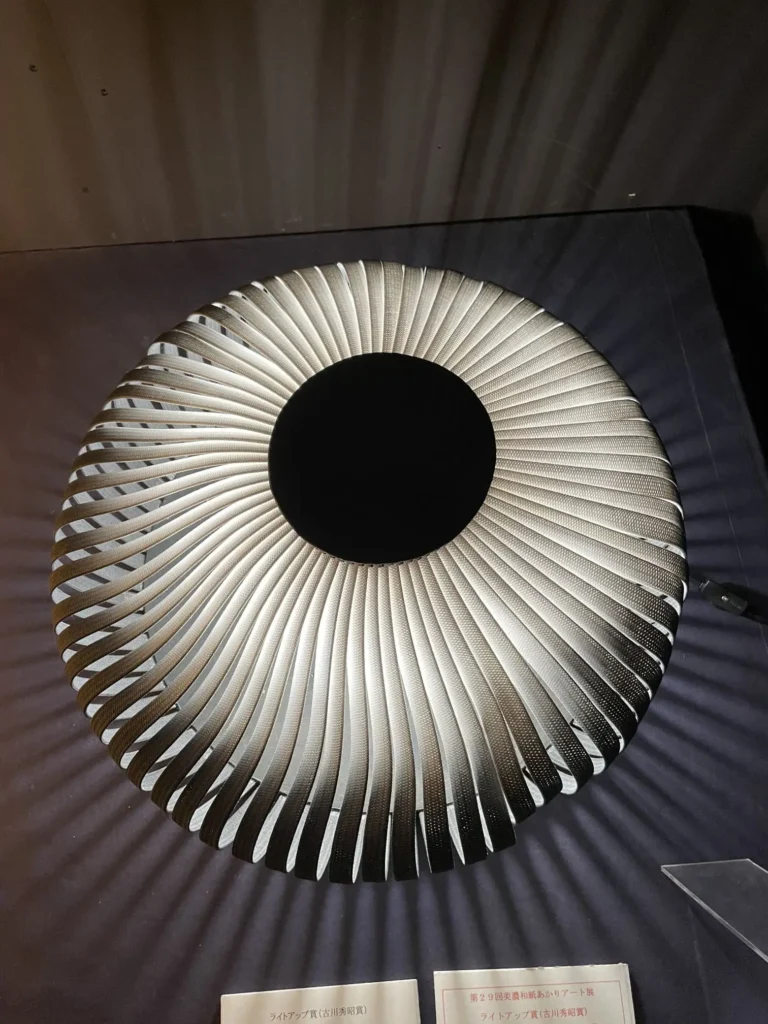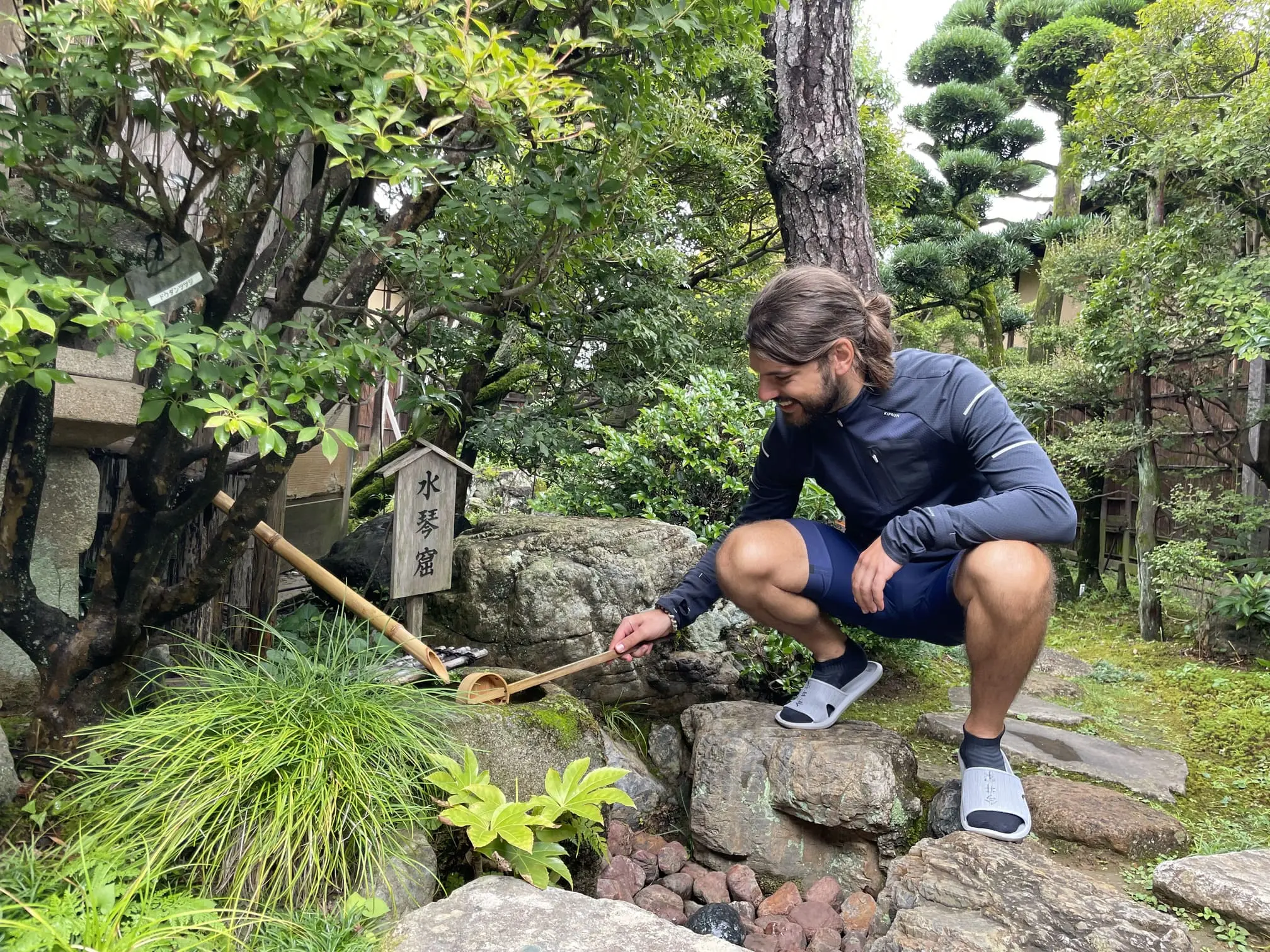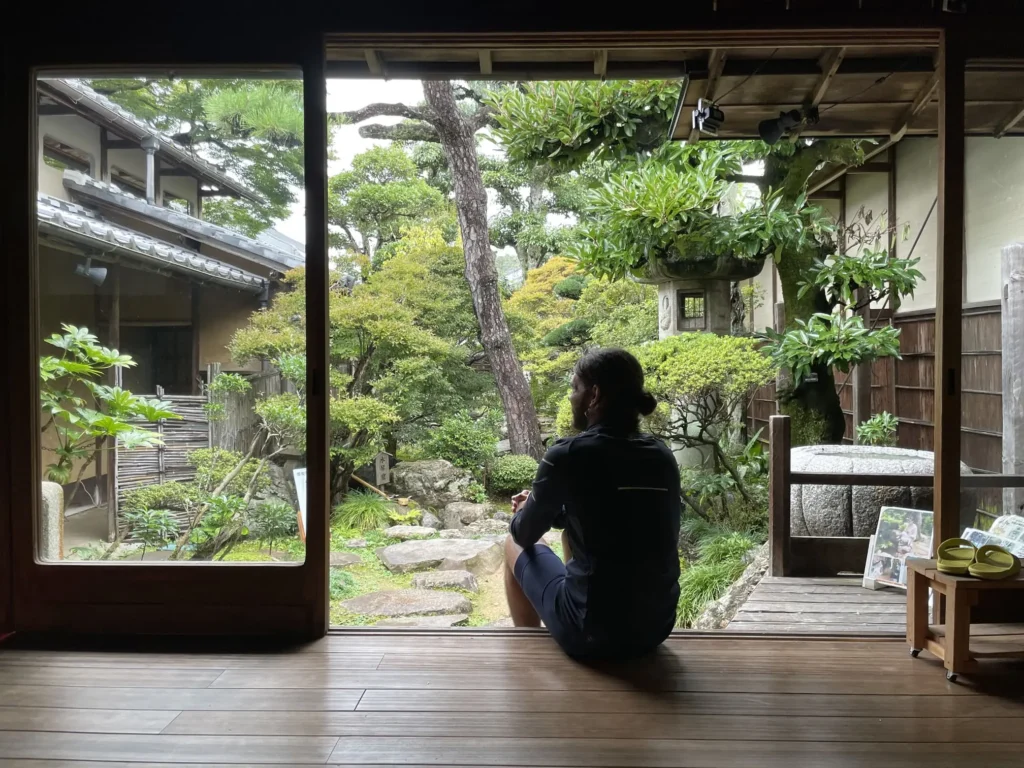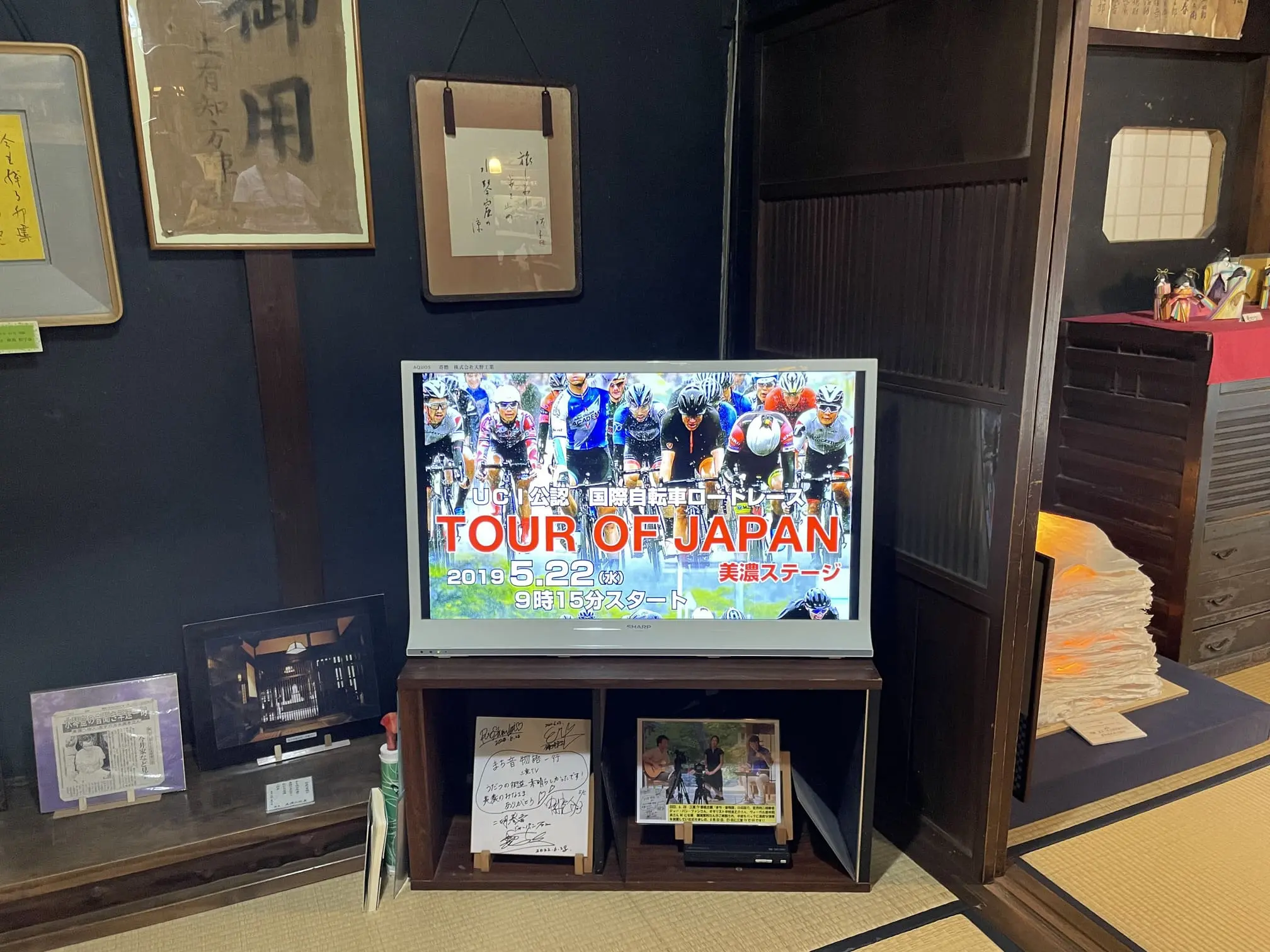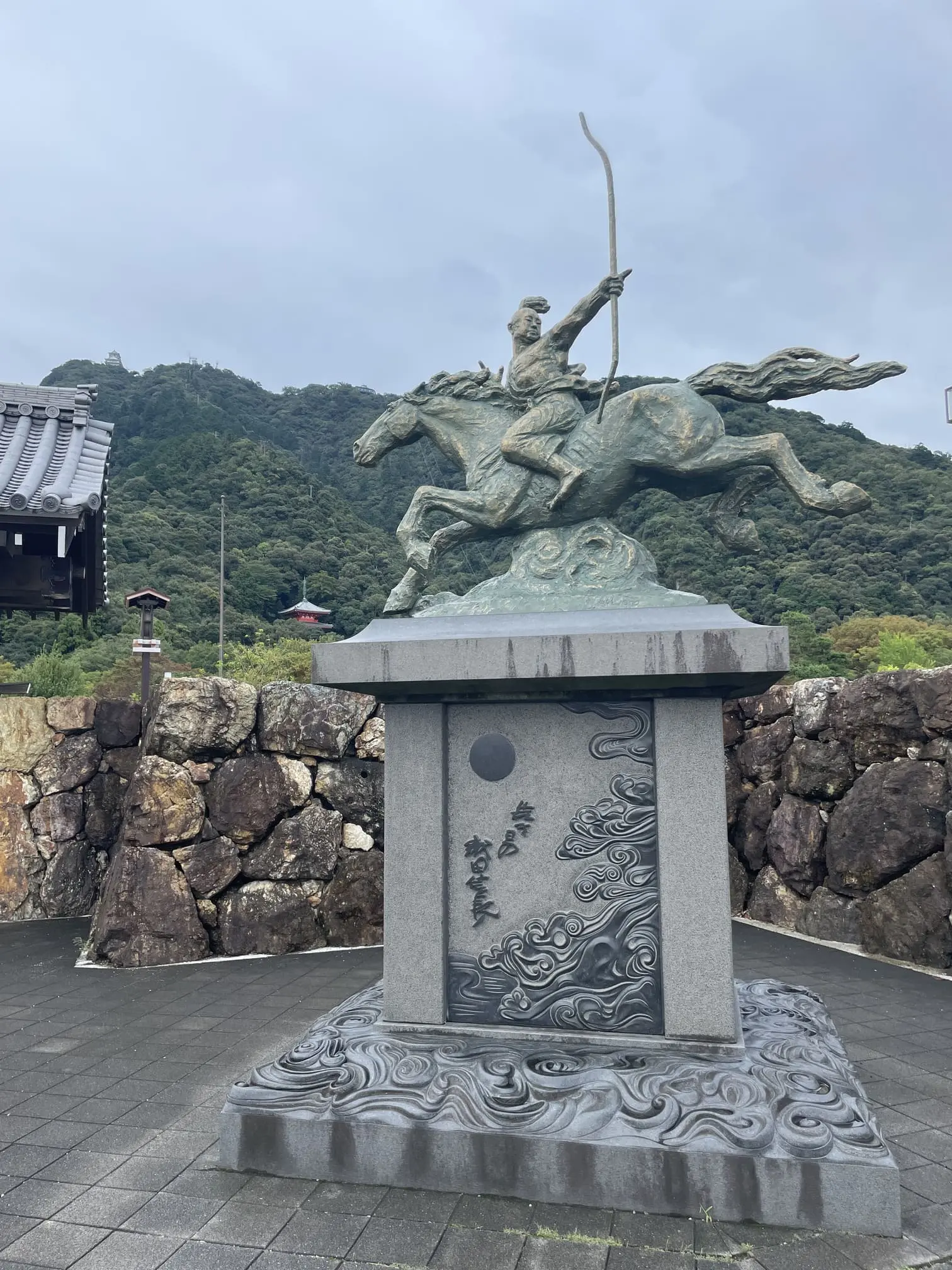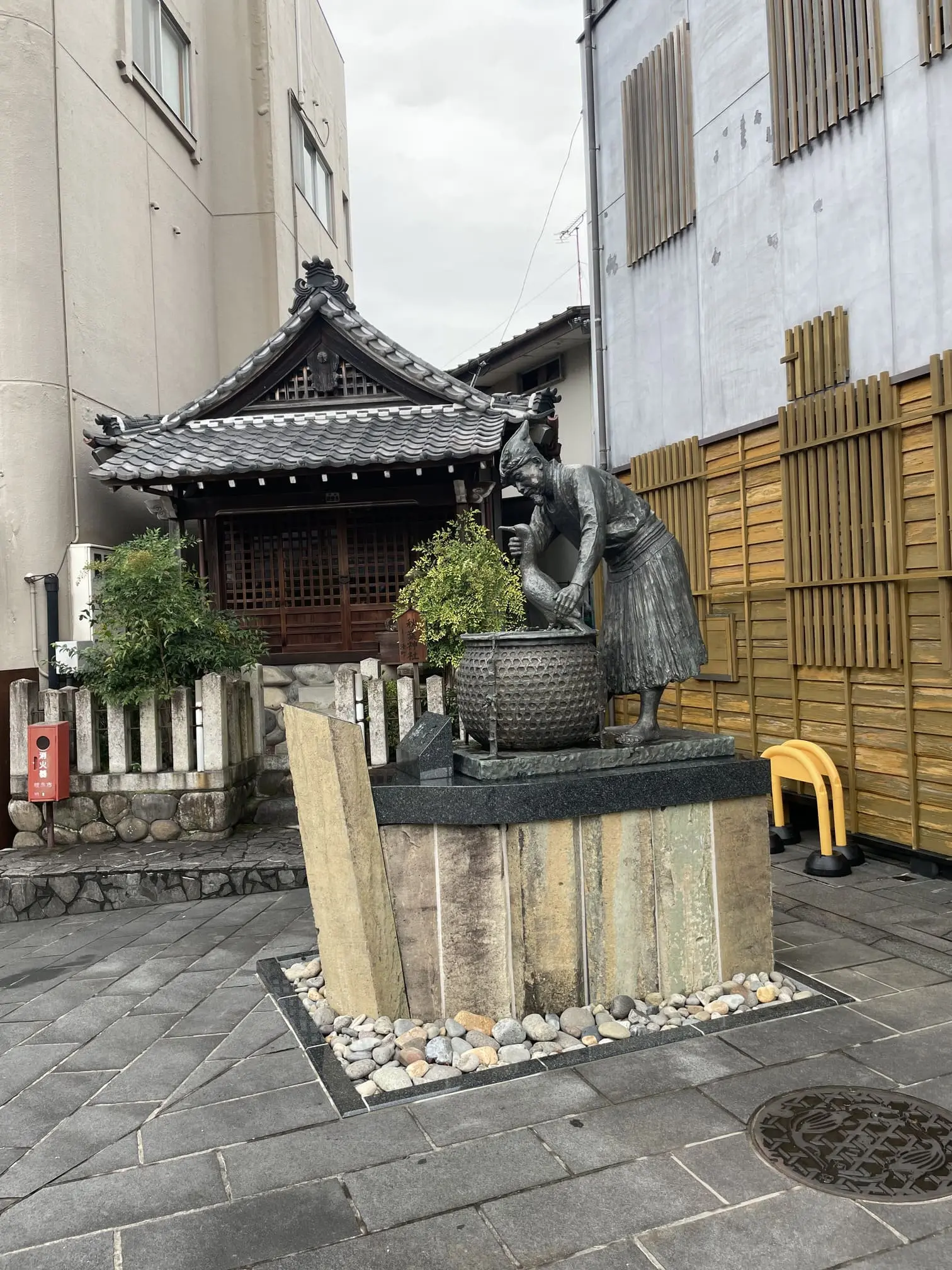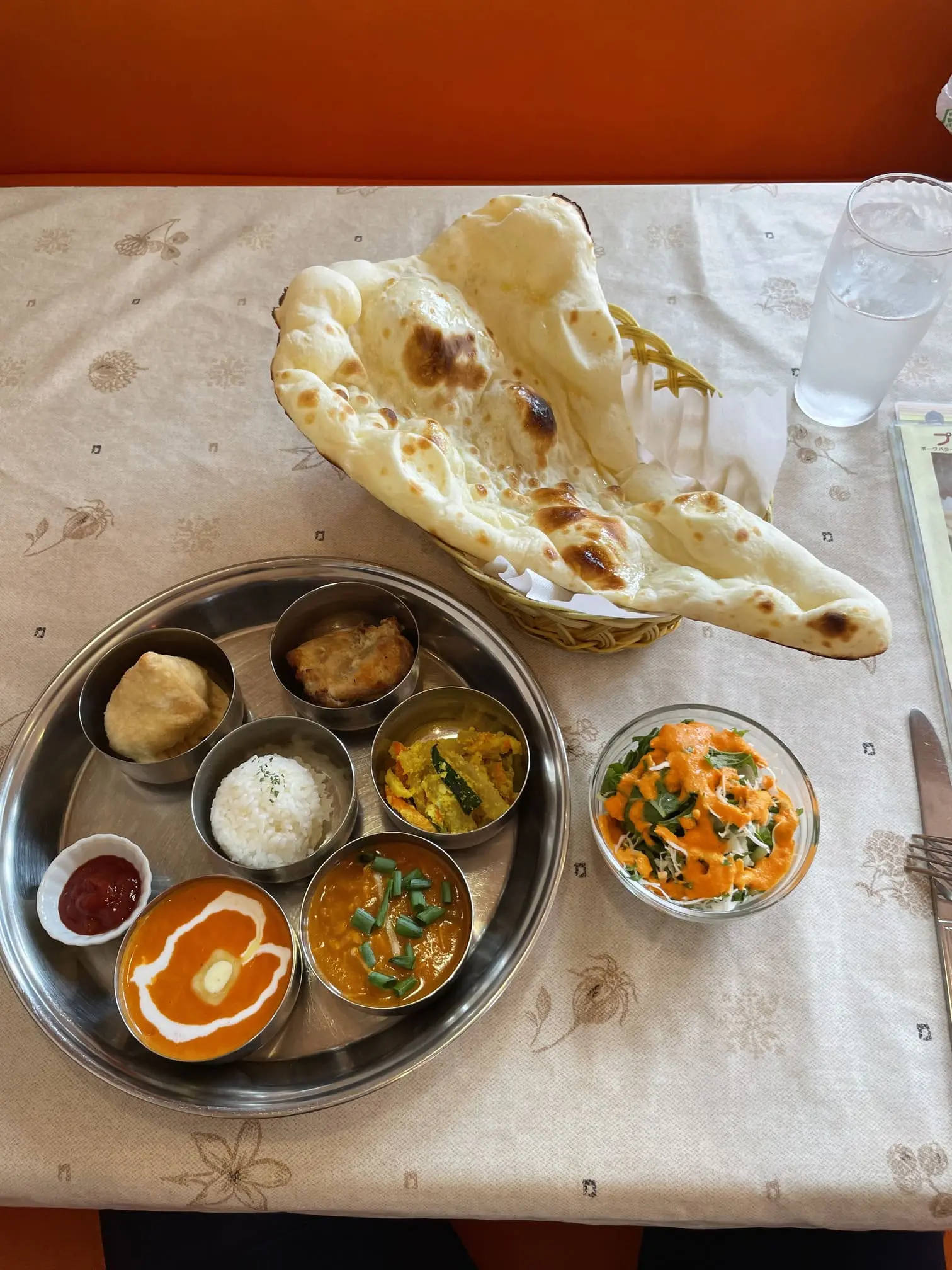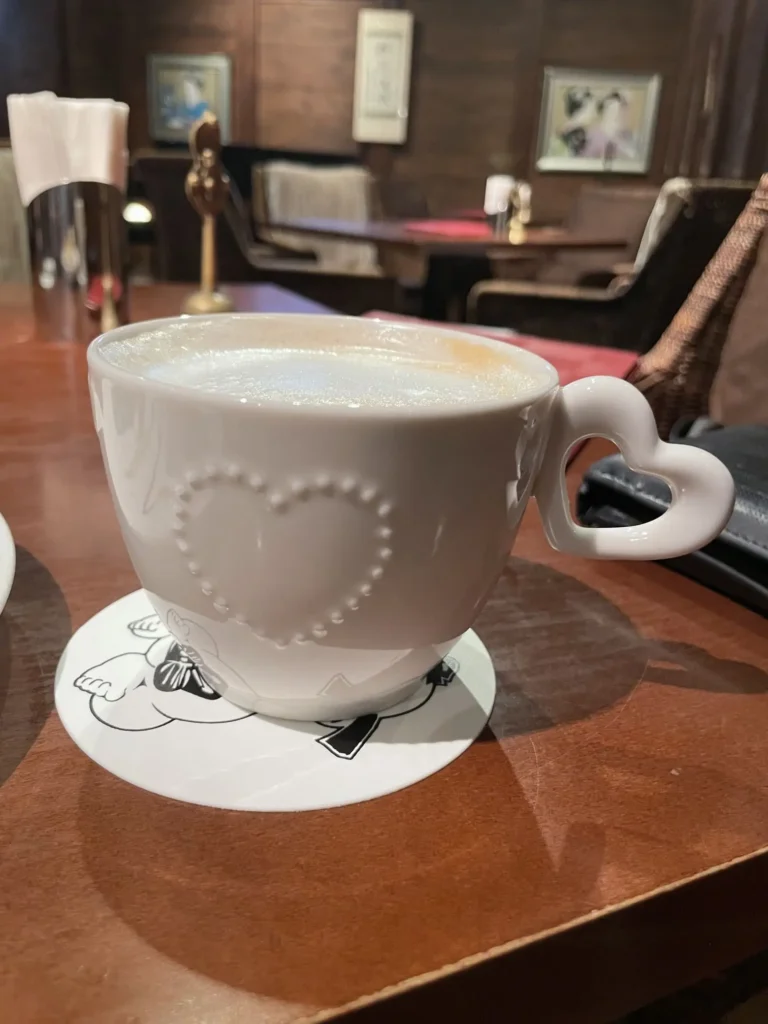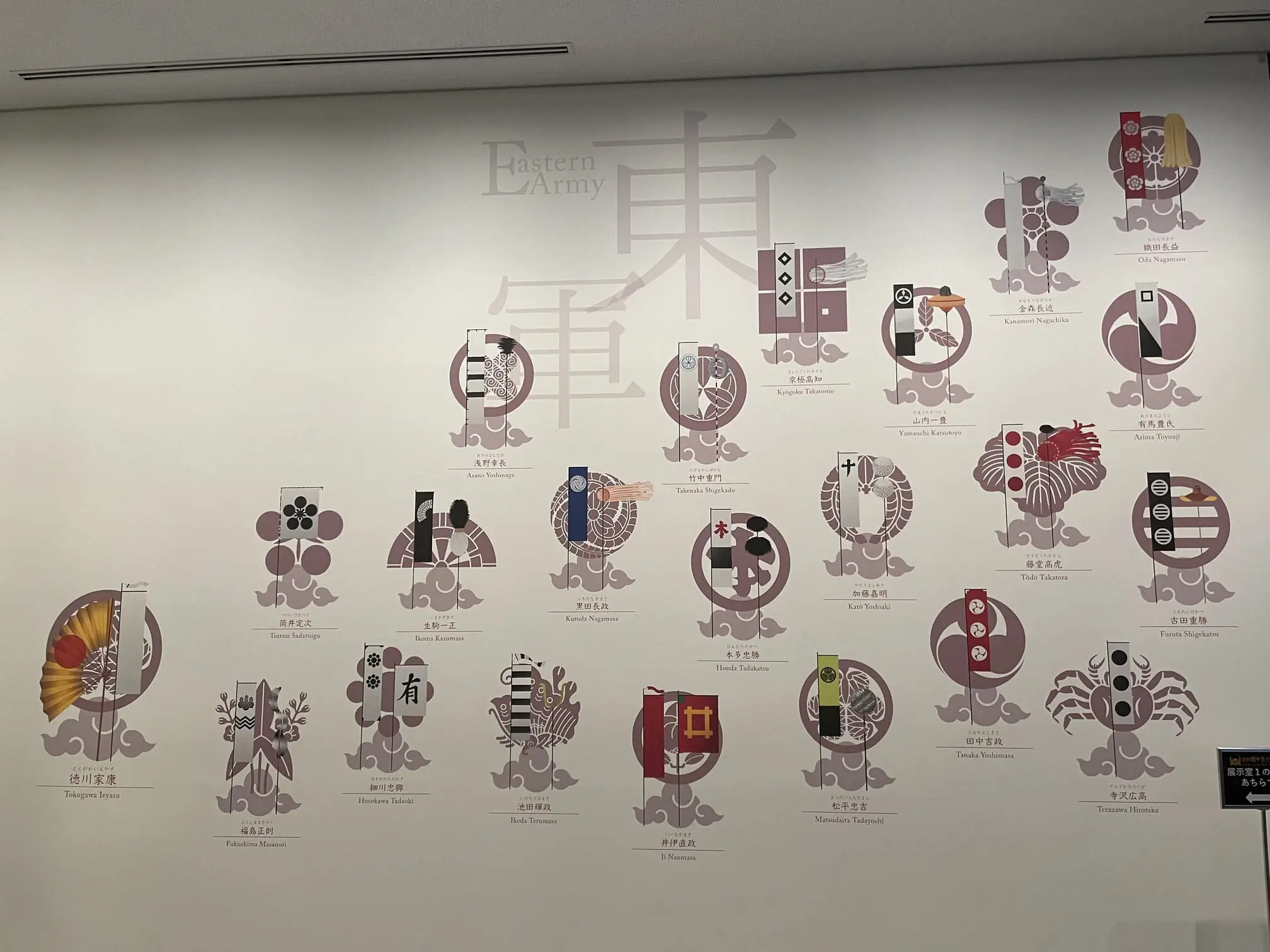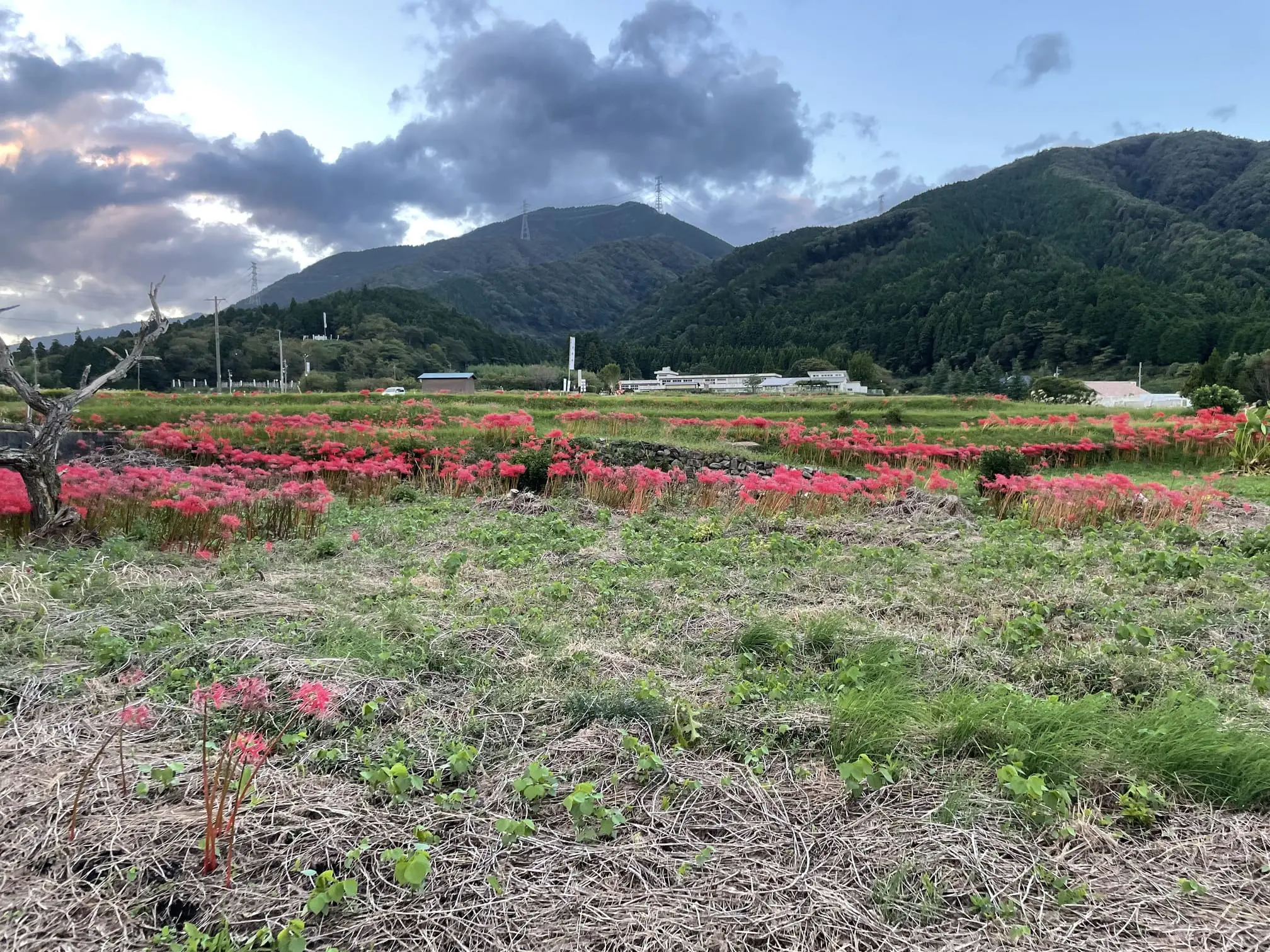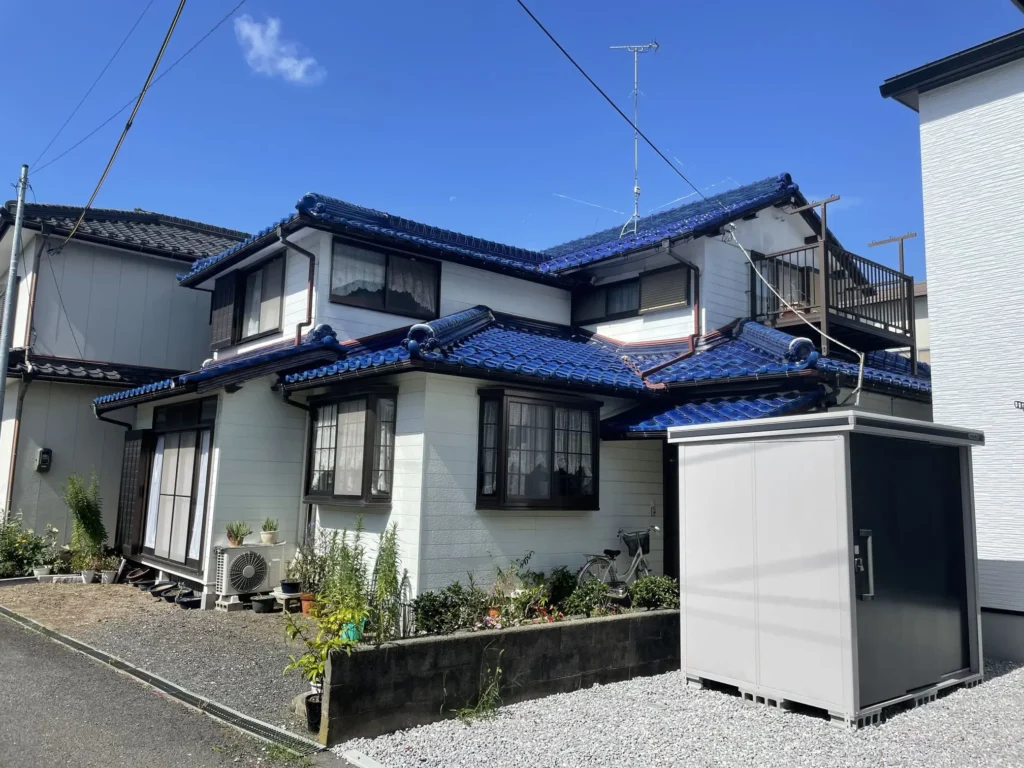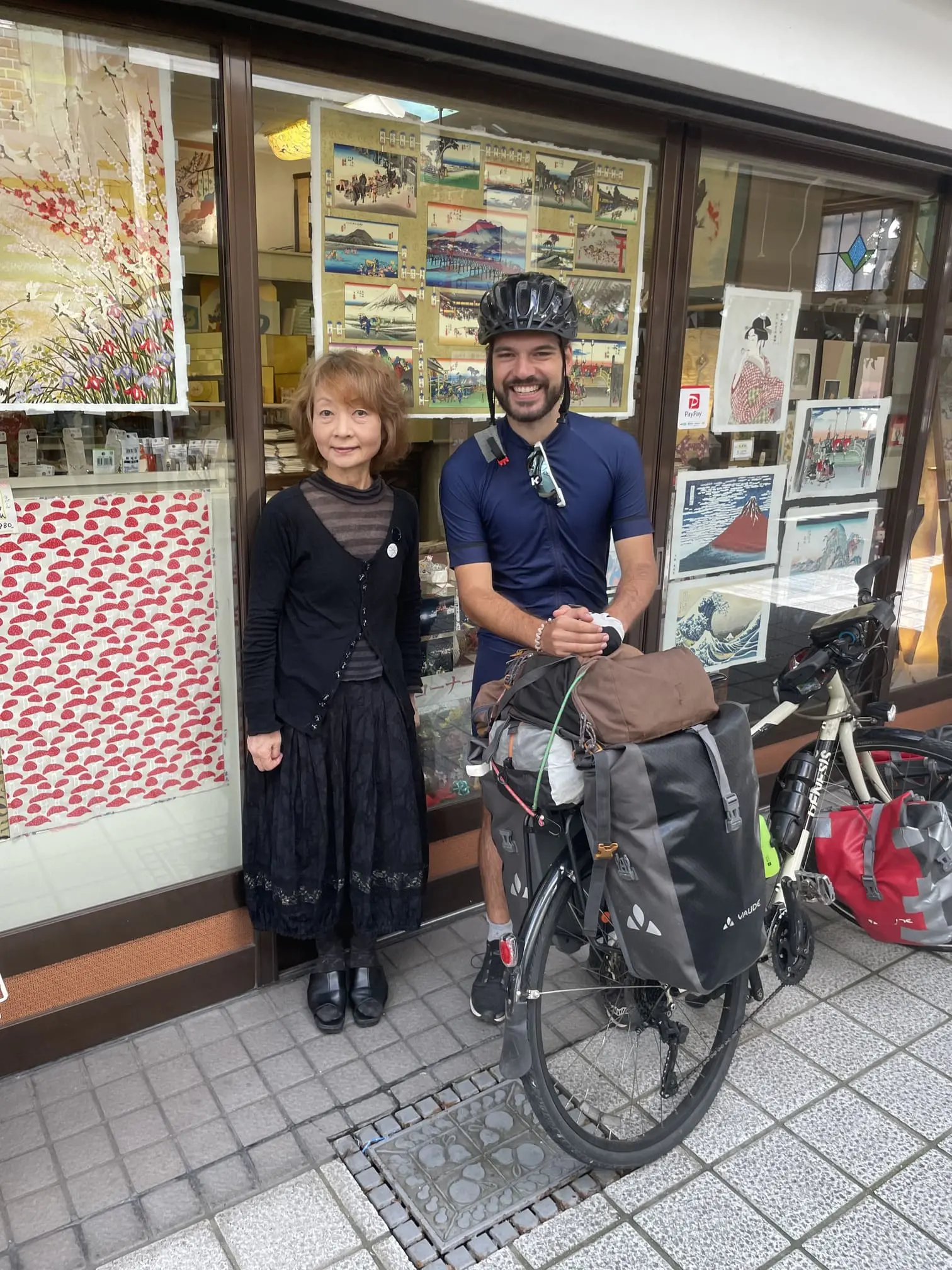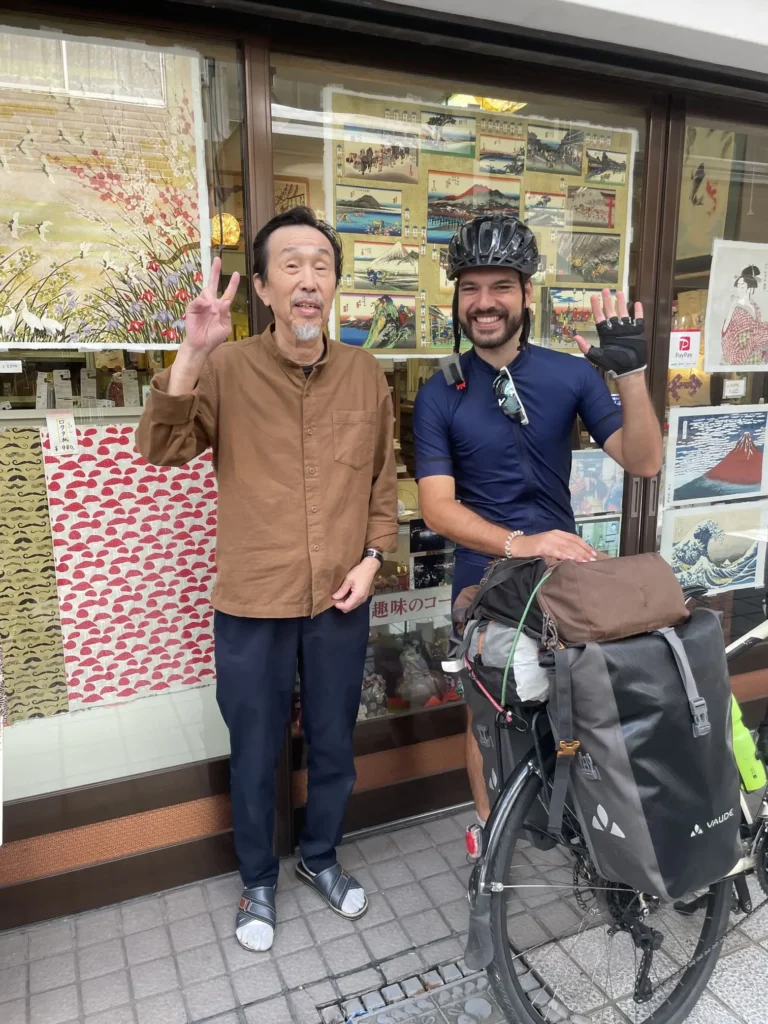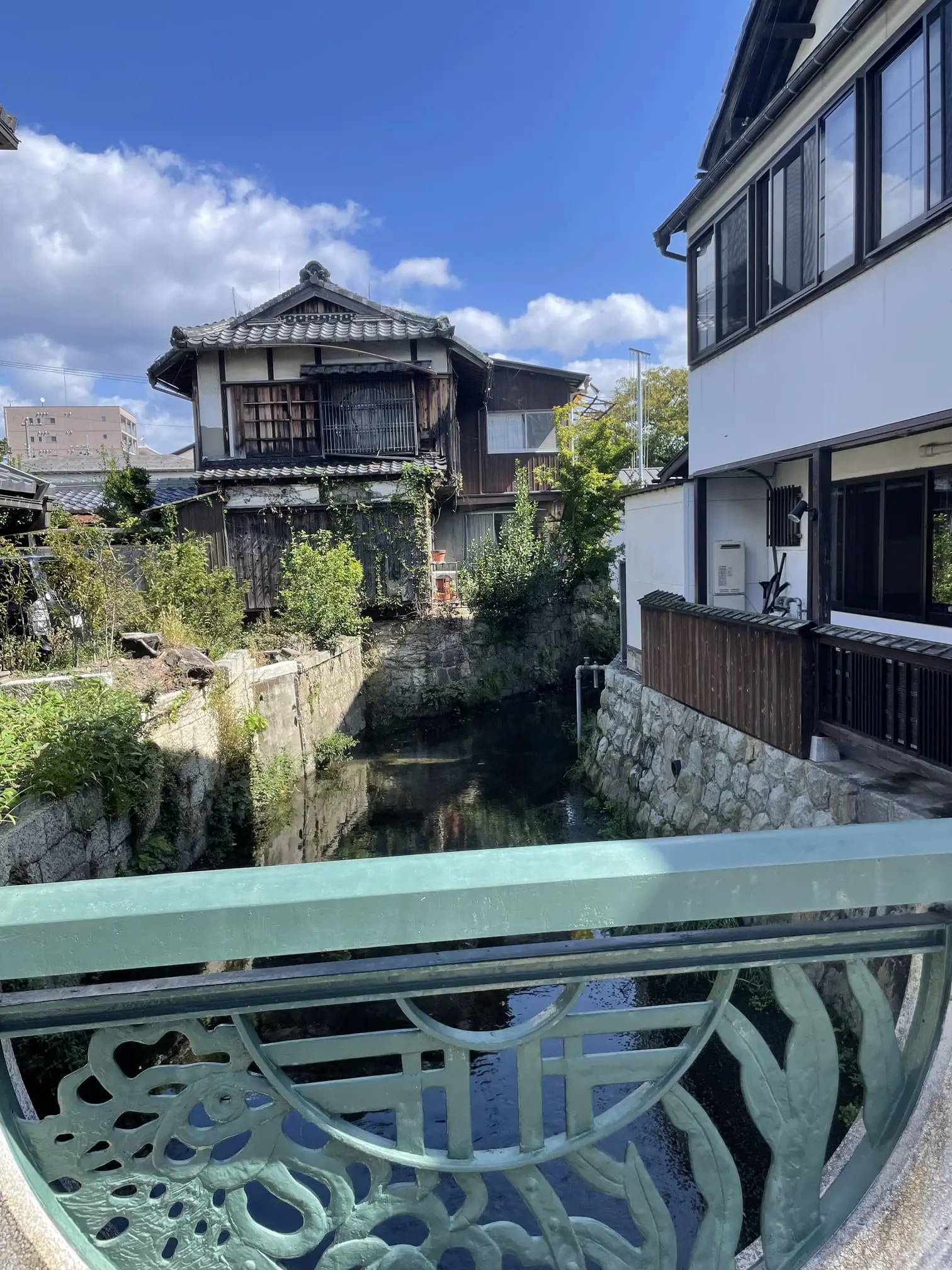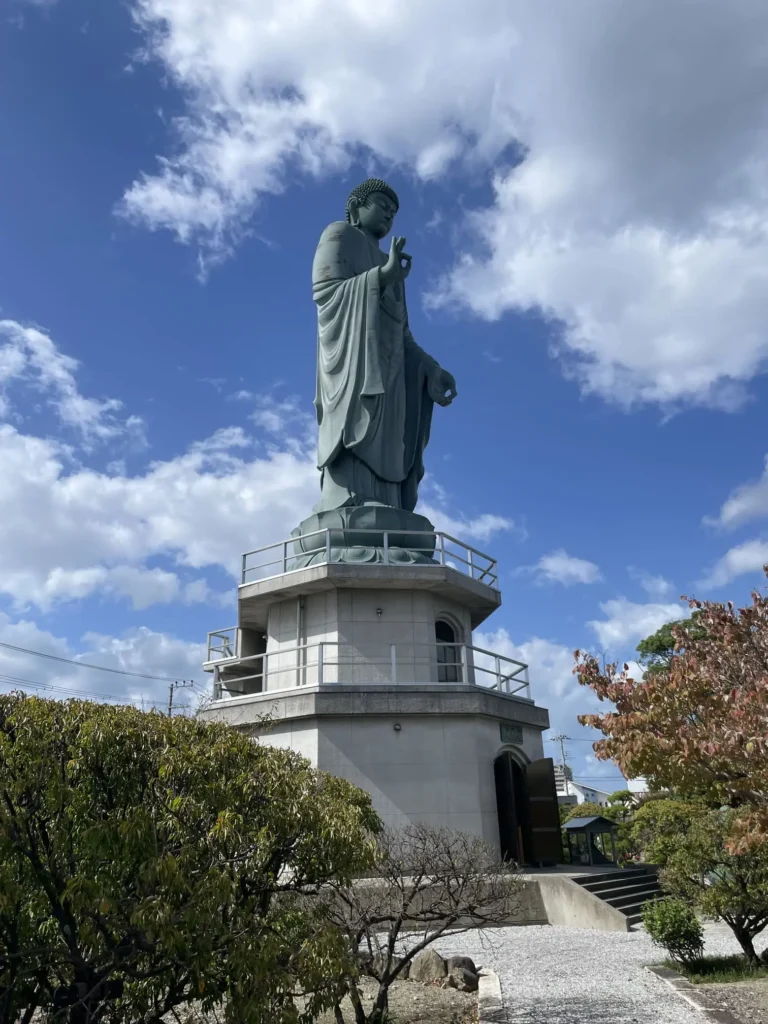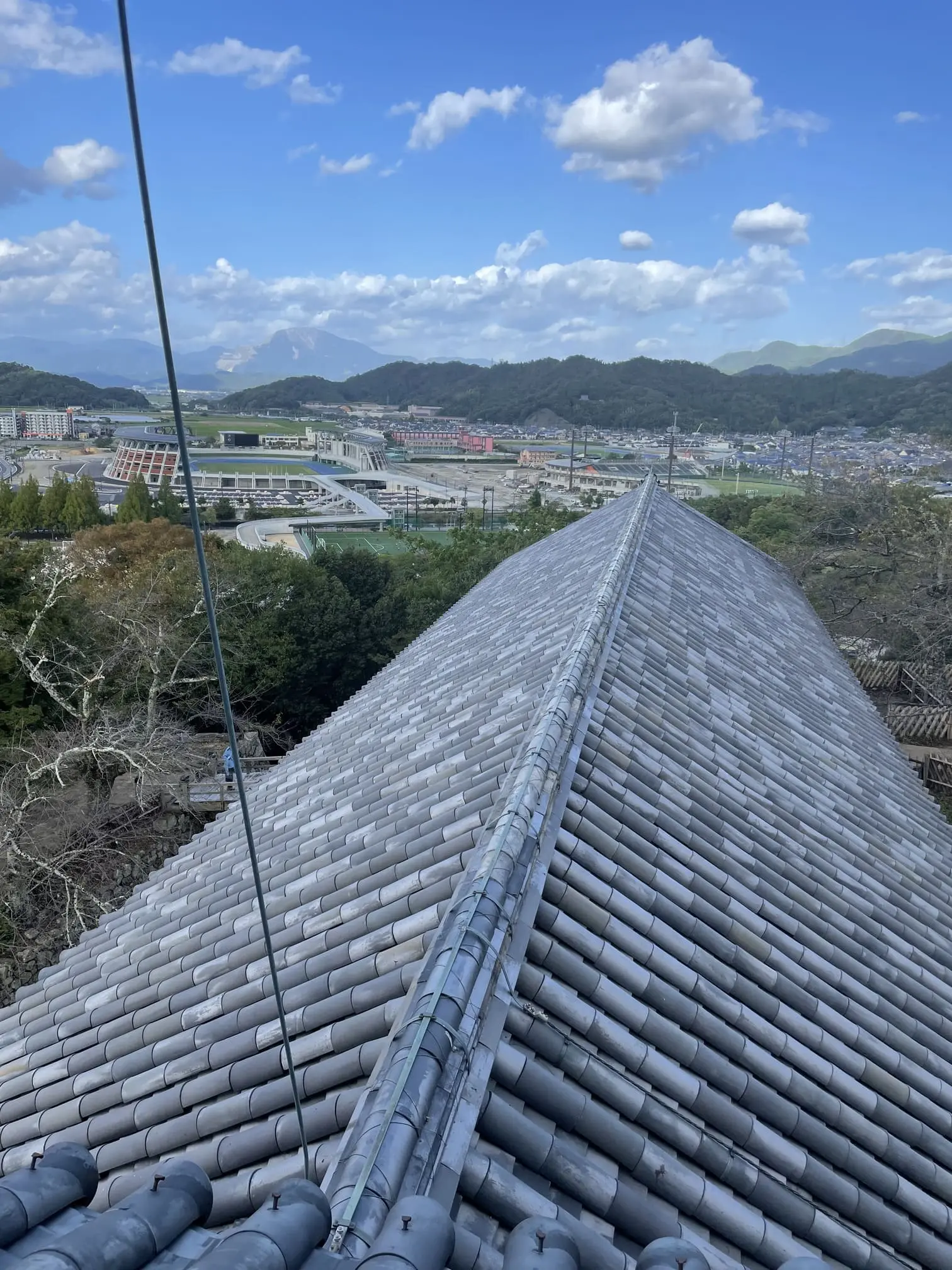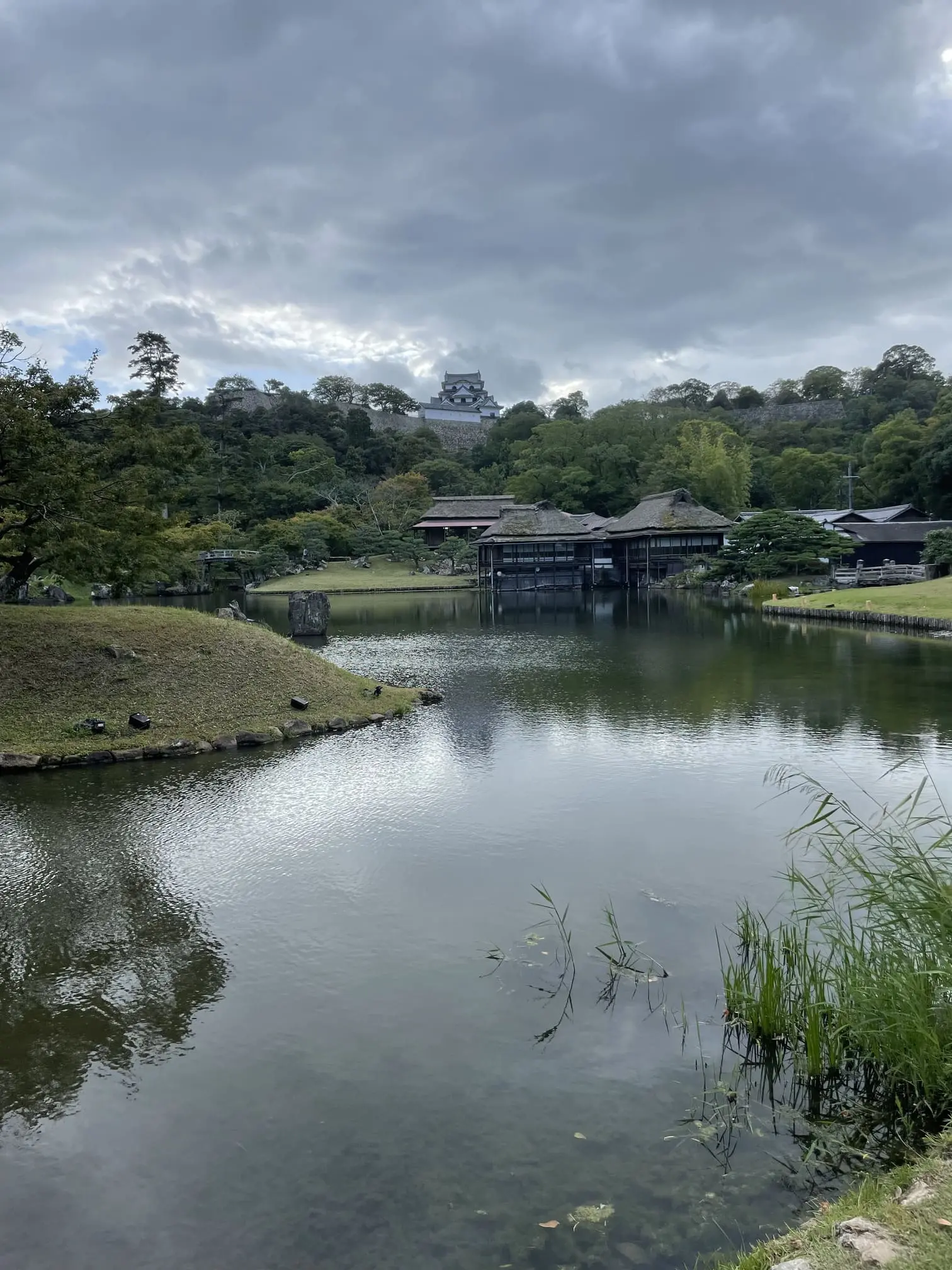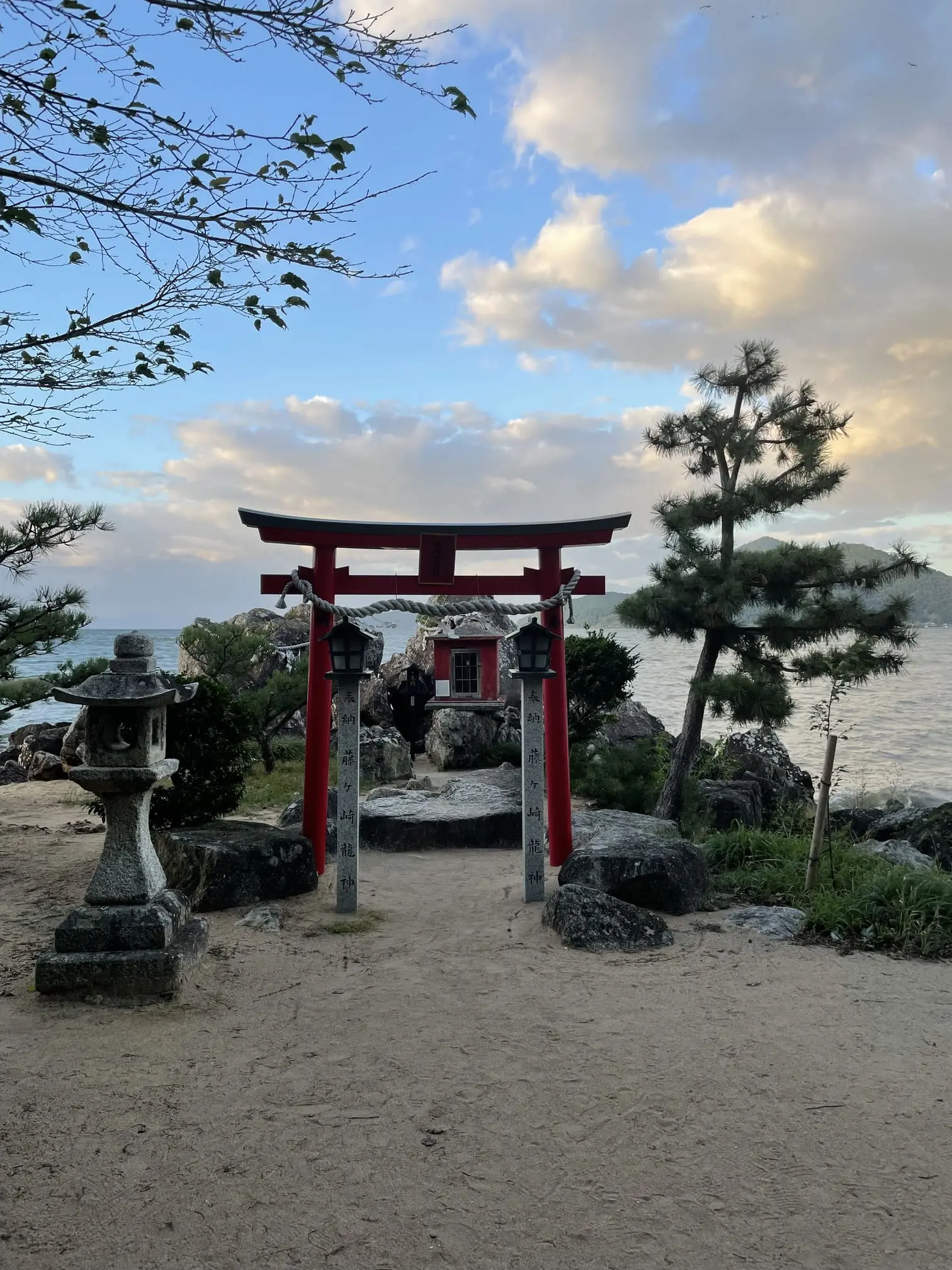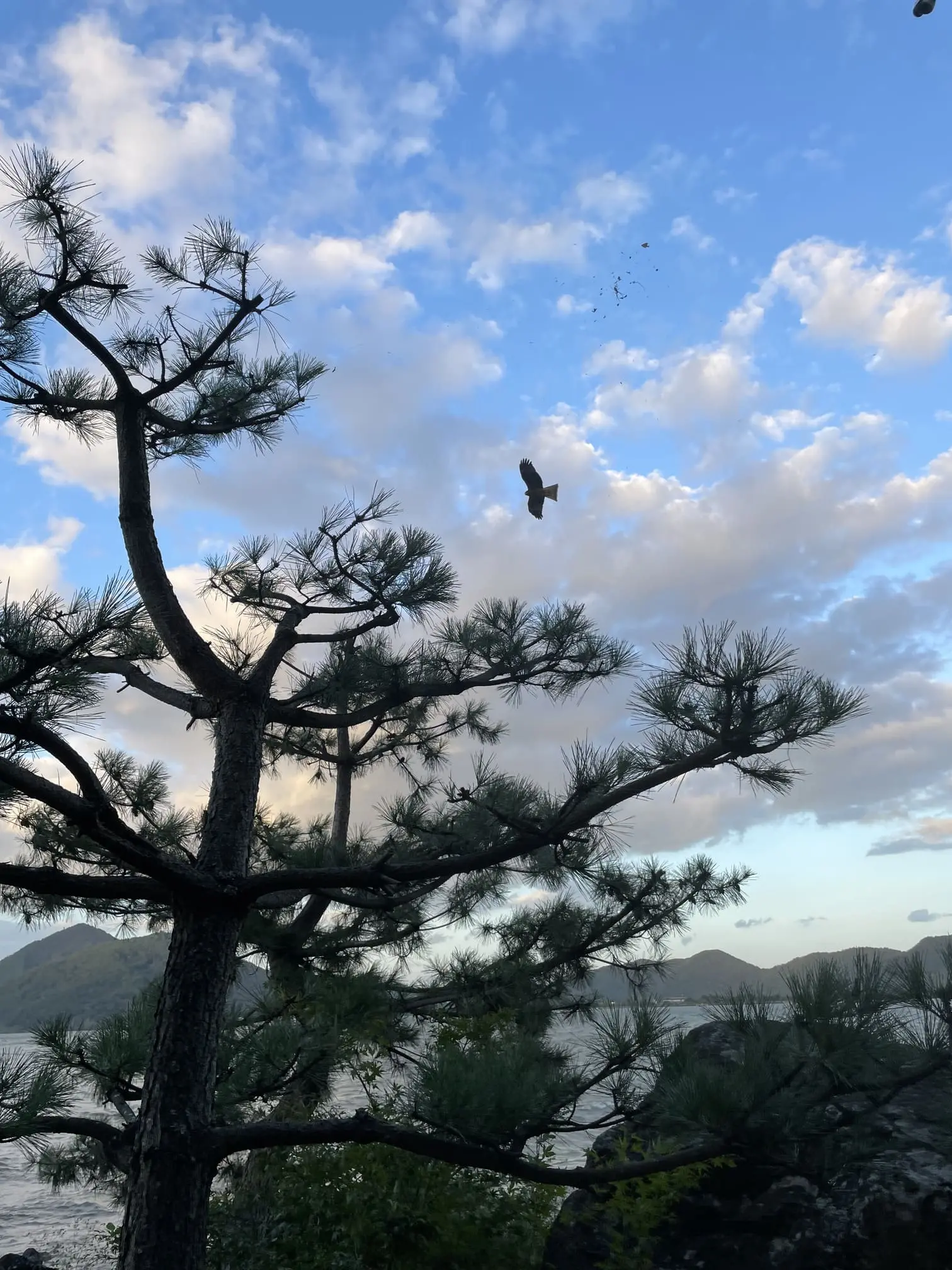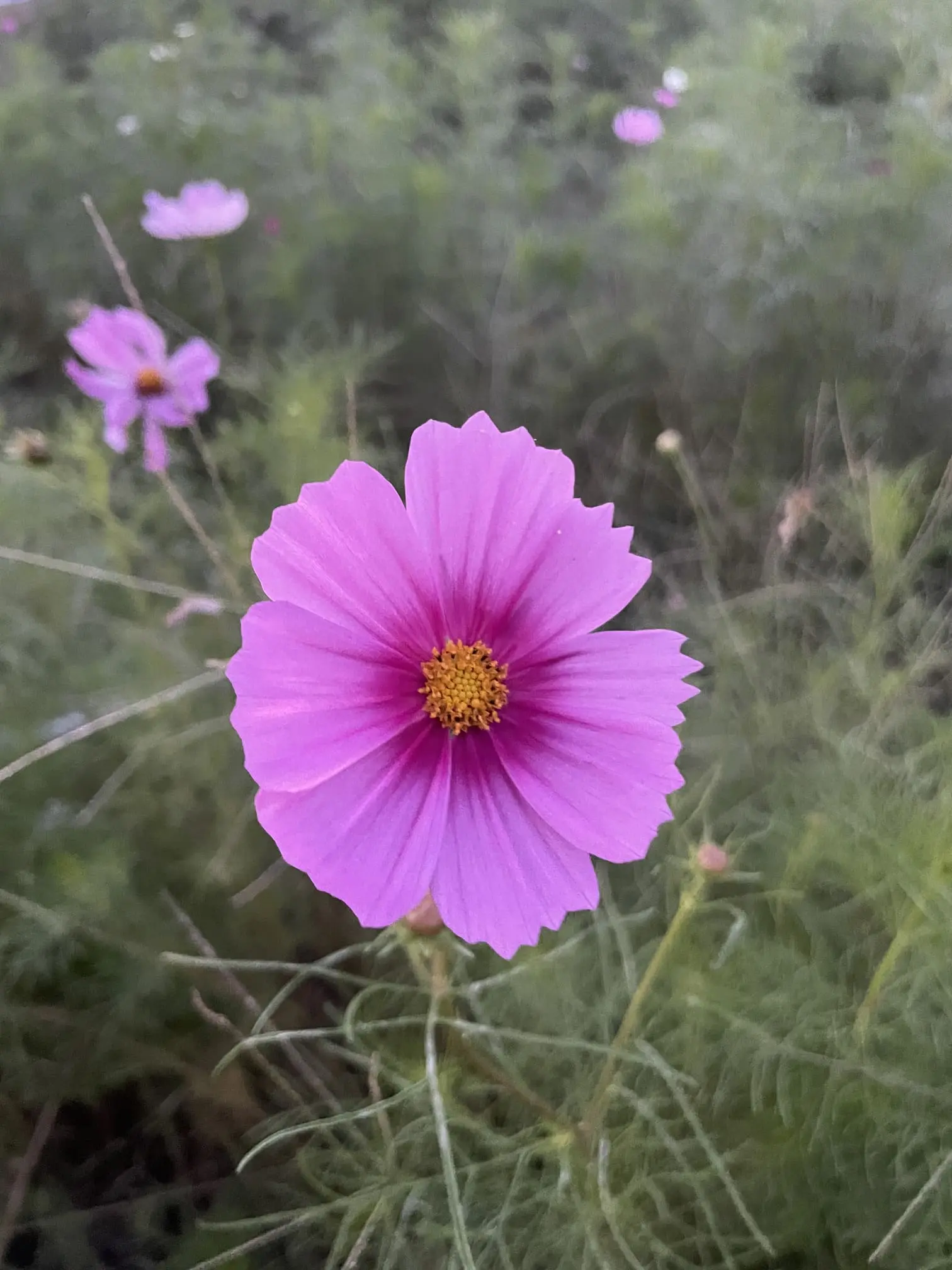After a week of adventure and sharing experiences with my new partner Vincent, we’re staying in the mountains of the Japanese Alps to enjoy their scenery for a few more days.
We’re on the border between the eastern and western regions of the country, Kanto (the east, team Tokyo) and Kansai (the west, Team Osaka-Kyoto and co). The sunrise that awaits you will, I hope, charm you (almost) as much as it does me.
Then, travelling through the prefectures of Gifu and Shiga will bring me to the country’s 2 most popular cities after Tokyo: Osaka and Kyoto, and I can’t wait.
I’ll leave you to find out.
After the previous day’s ascent of the Japanese mammoth, let’s go admire the sunrise in the land of the rising sun (hehe). Well, above this sea of clouds, the moment is unforgettable.
The wind and cold tease us, but honestly, we don’t even notice it; the present moment outweighs everything else. The ecstasy is present, and we still can’t believe the feat we’ve accomplished and how far we’ve come after all our journey. We stay many minutes to appreciate the visual and natural show standing in front of us. No words come out of our mouths, remembering the whole path we had to go through to reach this peak of our trip. An adventure for pretty crazy people.
We get back to get some warmth and prepare our departure. On the site, there are plenty of paths to admire the surrounding view. We take another one to admire the western side and then meet Tatsuki again for a photo before our respective departures.
At this point, I remembered that Mom had given me a little stuffed kangaroo to keep me company when I left, so I took the opportunity to take some photos. And still, what a small sign of destiny to have this little animal with me to enjoy some great experiences in the company of an Australian.
Start at 10:30 : The descent, although too fast, is a real pleasure to do, especially mentally. We’ll take the slightly longer southern route to reach Takayama because the shorter northern route consists of multiple tunnels, and the reviews on this passage in various Japanese cycling groups on Facebook suggest it’s better to avoid it.
We have beautiful viewpoints and colors along the way, but the important thing today is the mileage to reach Takayama. Lots of pace to push on our pedals. The end in the dark is quite rough, I must say.
We arrive in Takayama at 20:00. Vincent falls asleep straight away with his clothes on, LOL. I’m still hungry, so I go to try the McDonald’s that’s still open late. And like the rest of the country’s restaurants, the food is frankly cheap compared to back home, with a meal and nuggets for barely 8€.
But now I’m done, time to sleep.
Day 31 Takayama to Hida Furukawa (22 km)
Today, we take our time with the colossal physical efforts of the past few days. We visit Takayama leisurely. The city center is very beautiful, typically old-fashioned Japanese with these small traditional wooden houses and narrow streets.
We see lots of wagyu steak restaurants that look a bit like tourist traps, but oh well, shall still be tasty. The river and the bridges where we see herons and ducks are very soothing for our vagabond hearts lost in the heart of Japan.
We split up quickly due to different culinary desires. I order some nice skewers and a filling soup in the upper part of the city and visit the Hie Jinja shrine. Another inspiration from the film Your Name (and not the last on this trip and my plans) that has a beautiful mystical effect on me once again (it will always be the case for shrines nestled in the woods).
I return to Vincent, who has met a Swiss artist, a fan of the works of certain Japanese potters, while enjoying a warabi mochi with really good syrup. The Swiss is here for an art conference in the region, something apparently recognized internationally. We have plenty of interesting art discussions.
But that’s not all; we still need to make a slight progress on our journey and reach Hida Furukawa. Third Your Name spot, of course, with the famous station of the hero in search of his beloved. However, I’m too lazy to wait an hour to see a train arrive and get the exact scene from the film.
The rest of the town is super nice too, I recommend combining a visit with Takayama and our next day’s visit to the village of Shirakawa Go. You can see cute little watercourses with carp that you can feed, small temples, and charming alleys with surroundings that give the sensation of being in the middle of nowhere in Japan. Especially since it’s much less touristy than the other two attractions in the prefecture.
We settle in like little delinquents at a nearby camping site again without a reservation because we find no one at the reception. We meet two motorcyclists with whom we quickly chat before sleeping, a German video game translator and a cool Japanese guy.
After our cool discussion, time to sleep.
Day 32 Hida Furukawa to Shirakawa Go (47 km)
Objective: Shirakawa Go with a nice climb in perspective. Vincent wants to leave earlier, so I give him the priority to start his way, and we agree to meet later in the historic village.
The inevitable climb to descend into the village stings quite a bit. At the top, I meet a forest ranger who takes care of the protected area around. I decide to support the action by paying a small entrance fee to take a one-hour walk. The autumn swamps are nice, and I even encounter a sneaky snake that flees faster than I notice. Some little scare.
The descent is so enjoyable on the switchbacks; you can let loose without being in too much danger, pure bliss after the spicy climb.
When parking the bike, I see the village houses in the distance, the view is superb; these ancient times Japanese found a great spot in the middle of the mountains. The thatched-roof houses really have something special. This massive layer of straw (sometimes a good meter thick) as a roof, the ropes to keep the beams’ structure perfect, a true carpenter and joiner craftsmanship unfolds in front of us, simple visitors. Every corner of the village is photogenic, whether it’s the light, the surrounding nature, or the village’s heart, the flowers, the watercourses, etc… You could spend hours there just contemplating.
I then go to enjoy a few slices of Hidagyu (Hida beef, the prefecture’s wagyu style). Three pieces are enough, so flavorful and fatty they are. To accompany this, I even have some river fish (Iwana, the rainbow trout) and soba noodles. The waitresses are adorable and, as always, let me charge my phone and battery.
I quickly meet Vincent again to enjoy the area for one last hour. I have a delicious ice cream for the taste and to cool off from the ambient heat. Despite the reunion, our duo will have to split up again because I want to visit the southern part of Gifu prefecture while Vincent wants to see Kanazawa and the northern coast of the region. We hope to see each other again on his final journey between Kyoto and Osaka before he goes home and I continue west.
Emotional half-goodbyes take place before pedaling in opposite directions. I quickly find a place to camp and sleep and check if my gear is fine before arriving in less rural areas in the next week. All good.
Day 33 Shirakawa Go to Gujo Hachiman (91 km)
Departure at 9:20 : I initially aimed for Gifu at 130 km, but given my slightly cooled condition and my pace, I reduce my ambitions to reach Gujo Hachiman.
The paths are nice with some peaks to climb, but it’s manageable without too much trouble. I taste a good misokatsu (breaded pork with miso sauce) near a somewhat random amusement park in the middle of the forest and mountains. The people are adorable, this restaurant also offers dog training courses, I don’t understand anything, but I like the initiative.
Fatigue catches up with me, but I reach Gujo before nightfall to enjoy the last light in the valley. With no one on the streets, the ambiance of old traditional Japan and, for once, without electrical wires, has a nice effect.
The traditional watercourse that soothes hearts runs through the streets. The castle perched several dozen meters high truly acts as a guardian over the valley. Readapting to traveling alone is also a challenge compared to the ease of interacting when you have a companion with you.
As night falls, I stop to have an excellent coffee and an amazing French toast in one of the city’s corners, in Ebanatawa. This lightly sweetened treat with good chocolate ice cream makes me forget the sickness and reminds me of one of the reasons I take these kinds of trips. No matter the feeling at the moment (good or bad), we’ll always encounter something to comfort us sooner or later. Today, this waiter and his delicacies, tomorrow maybe something else, we’ll see.
You can see lovely neon lights at nightfall, one representing the city’s dance, performed during a summer festival where the residents repeat it all night until 5:00, the Gujo Odori.
I then ride a few kilometers in the dark, it’s scary without my lights, and reach a camping site that’s again closed even though it’s not even 18:00. I decide to be a squatter and pitch my tent near the toilets with an electric socket.
The night has just begun with a super downpour arriving, my tent set up on the gravel, the water stagnates around my tent. The tent is starting to age, the same as in the Balkans, water penetrates, and I have to manage to stay dry with the mattress and sleeping bag. My waterproof poncho will serve as a protective mat…
My night is not going to be very restful with the noise of the raindrops… Tomorrow will be a better day, I hope.
Day 34 Gujo Hachiman to Gifu (53 km)
Waking up with my head in a fog due to last night’s rain. I try partially to let my tent dry, but well, I’ll do it seriously tonight with a stop in the city of Gifu and a nice hostel.
I leave quickly before anyone at the camping site can see me and follow the watercourse that will guide me out of the northern prefecture mountains towards the flatlands. Along the way, I spot a troop of Japanese macaques fleeing my presence. I try to follow them a bit, and it seems they have adapted to living near human dwellings without staying too close to humans. I spend at least an hour wanting to admire them. They are so mischievous, I love it, I even see a baby clinging to its fleeing mother’s belly.
I meet an old lady; we exchange as best we can for her to tell me that coexistence with the Saru (monkey in Japanese) goes well. I don’t encounter many animals on this trip, so I take advantage of the few I have the chance to see.
I then arrive in Mino, a town famous for its Washi paper and a festival honoring the art of paper making sculptures.
The museum is sublime. Knowing that these fragile structures are illuminated for one night each year in the alleys makes me think it would be exceptional to experience that, maybe next time 🙂
The visit continues with the option to make your own paper, but it’s a bit too far for me. I want to reach my inn for the night on time. So, I only visit the house where the paper was originally created. A guide gives me some cool anecdotes. The old chimney has been replaced by a very clever light well for interior lighting. All the doors are made with small wooden slats and the famous paper. There are gluing rules and dimensions to respect to properly use the local paper as house “walls.”
The guide shows me that the Emperor of Japan and the Rockefeller family have visited the place recently.
The small inner courtyard garden is poetic; there’s even a hydraulic “organ”—if you let water flow through it, you can hear a gentle sound coming from the ground. At the back of the garden, there’s a mini shrine with heart-like carvings on the various pieces, which actually represent wild boar eyes that are believed to bring good luck. That’s why people pray for health and success here.
Seeing that I’m traveling by bike, the guide lets me know that the Tour of Japan passes through here as well. I tell him that despite my good performance, I can’t compete with the war machines that achieve this feat, haha, we laugh.
Finally, we can admire the beautiful details of the tiles and corners of the houses on the roofs, a real craftsman’s work, I’m in full admiration.
That’s all well and good, but my stomach is growling and craving some exotic food. I stumble upon a great Indian restaurant!
After this Mumbai delight (I have no idea if from there or not), I finally arrive in Gifu. I’ve never seen a castle perched so high on a mountain “peak,” it’s truly impressive. But with the very foggy and humid weather, I decide it’s not worth climbing today. I also discover a statue of Oda Nobunaga, the first of the three founding fathers of the Tokugawa era, which followed to achieve a unified Japan. In fact, he is from here, explaining his statue.
Cormorant fishing is a tradition here, and you can see many references to it on statues, artworks, or even manhole covers (yes, the Japanese have very stylish manhole covers).
At the inn, I meet a really nice group, including a Swiss guy also traveling by bike. They tell me we’re going to eat curry. At first, I think of Japanese curry… but no, it’s a good Indian curry lol. I hadn’t eaten Indian food for at least a year, and now twice in one day. Let’s get ready to work those intestines and sphincter like never before, HAHAHA. Everything was excellent, and Naan is clearly one of my favorite breads, just don’t overdo it.
The ride back is on our faithful steeds but without the saddlebags, making it feel almost too easy to pedal like this with an empty load. And then it’s off to bed after hanging out all the washed or damp clothes from the night before, fingers crossed for express drying.
Day 35 Gifu to Sekigahara (37 km)
Departure at 10:00 : Heading to the site of the most important battle of feudal Japan: Sekigahara.
First, I have to fill my shopping list:
- bike shop to check if similar tires to mine are available
- camping store to buy a gas bottle and a headlamp because I lost mine recently
- grocery shopping
Finding an outdoor store, I happen to come across a store literally named Tenga—those famous Japanese male s*xtoys. Don’t judge me, I didn’t do it on purpose, I promise.
After this good laugh and completing my shopping, I try the Unagi I’ve been waiting for. It’s an eel dish, a specialty of Gifu (and other regions with rivers and no access to sea), marinated and cooked in a very dark sauce served over rice. Depending on the menu, you get more or fewer pieces and maybe other accompaniments or ways to eat them.
It’s the first time I’ve eaten eel. I must confirm that it’s very good, very juicy, with little to no “river” taste, almost a bit fatty but with the menu I chose, it was just before reaching the point of being too much, so perfect.
A brief historical note on the Battle of Sekigahara
I then quickly arrive at the Sekigahara battle museum before it closes.
I looked forward to come here to better understand the foundations of the most famous period in Japan dominated by the Samurai, during which the country closed itself off, allowing very few foreigners to enter its territory. The battle is one of the main turn to found this long existing system for more than 200 years.
You can appreciate lots of equipment, combat outfits, and other historical tools from the era and the battle specifically.
You also see the most important figures of the internal conflict that led to this climax. Knowing only Tokugawa Ieyasu by name and visits to Nikko (cf Day 21), I learn more about his (Machiavellian) strategy and his direct confrontation with another protagonist: Ishida Mitsunari during the battle.
As I explained before, there are three main characters in the effort to pacify and unify a very decentralized Japan, prone to conflict between small kingdoms and lords. Oda Nobunaga, the first, entrusted his will to Toyotomi Hideyoshi, who, through several events, managed to maintain a semblance of peace. He passed on his will for a pacified Japan to several disciples (including Tokugawa and Mitsunari), who were supposed to carry out the mission without a single sovereign (a counterpower to the emperor). But Tokugawa didn’t see it that way, and 2 years after Hideyoshi’s death, the battle broke out. It resulted from numerous strategic maneuvers (marriages, alliances, betrayals) by Tokugawa to gain a majority of allies and counter all other potential disciples from taking power. Thus, an army from the west (Osaka, Kyoto, the Kansai region, and further west) opposed the advancing eastern army (Edo, which is old Tokyo and the rest of the north) to gain full power.
Mitsunari became a leader more or less by default after one of the potential leaders stepped down. Hideyoshi’s flame guided him to the plains of Sekigahara. Thus, in one morning, one of the most significant events in Japan ended. 2-3 cunning moves by Tokugawa to convince a western ally to betray sufficed to thwart their strategy, initially outnumbered.
Despite the tide turning, the brave warriors of the west fought to the last breath. Those whose honor was tarnished performed seppuku (ritual suicide). Mitsunari was captured and executed a few weeks later.
Several other conflicts eventually established the Tokugawa clan’s dominance for the next two and a half centuries. The Edo Era began, and the west (mainly the Kansai region) became subject to the east, which also explains the current rivalry between Osaka/Kyoto and Tokyo for the most influential and powerful region in the country.
What strikes me is that we generally only know Tokugawa, their dominance, and the two other important names of this period mentioned earlier. But when you visit the sites and analyze the films associated with the battle, you feel more of a hero personification for the loser Mitsunari and a pejorative representation of Tokugawa, which is quite curious. Perhaps, for today’s values and morals, Mitsunari’s behavior is more attractive and commendable than Tokugawa’s. This is my humble interpretation of the day.
Bonus: go check out the potential helmet Mitsunari might have worn. It’s worth it to see, maybe not practical, but he must have looked classy.
I then visit the most important points of the battle. I even see some red lycoris, which, by pure coincidence, represent the dead. Maybe there’s a link with this bloody battle from four centuries ago, who knows.
Night falls, and I have to hurry, I find a spot in a campsite at the last minute, once again without a reservation.
Day 36 Sekigahara to Moriyama (Shiga) (86 km)
Upon waking up, I get caught by the campsite owner, who tells me I should have reserved. I explain the situation, that I just arrived and am ready to pay without any problem, but that yesterday there was no one, and as usual, he tells me I should have called, which of course, I can’t do. But we pretend to say yes, and I pay for my night. Bye Bye.
I head towards the largest lake in Japan, Biwa ko.
On the way, I see a long Shinkansen track where you can admire it nicely. I also see an elementary school break for the kids playing on their typical playgrounds. They perform really well-rehearsed choreographies. Finally, I see beautiful houses with blue tiles, super pretty! I want the same at home haha.
I pass through Nagahama. A very nice little town on the lake’s shore, I really liked its tranquil atmosphere with lots of small shops where people seem super nice and welcoming. I highly recommend it.
It’s like Takayama without tourists. They also have a beautiful Daibutsu (giant Buddha statue) in a somewhat random place from the south of the city.
The rest of my day will consist of passing the kilometers and admiring the lake. Given its size, it’s not surprising there are waves, it’s almost like a sea. I stop again at Hikone to see the castle and the surrounding gardens, another good reason to visit this lake and the activities around it, it’s also very beautiful and authentic.
Before nightfall, I still look for fields of cosmos. These flowers I’ve seen occasionally in meadows or in people’s yards. I have become an unwavering fan of this flower that gives the impression of being wavy like a dress or a skirt. Magnificent.
But that’s not all; this weekend is a three-day weekend, and all the Japanese are out, which means my idea of free camping around the lake is partially good, but the spot is crowded. However, I find a good place to fully enjoy the area.
When I settle in, I think I should book my nights in Kyoto for the next day, but with this longer holiday weekend, everything is already reserved, and what’s left is overpriced. So, I make a radical but wise decision. I will park my bike at the bicycle parking at Kyoto station, take the train to Osaka, and visit the unique city and its neighbor Nara without a bike for a true break of several days.
I will then return to Kyoto to see Vincent and continue my journey to the northern coast of western Japan.
With all these plans, I fall asleep, exhausted from a week marked by historical discoveries and the end of the extreme elevations in the center of the country.
See you in the next episode to discover the surprising Osaka and its friend Nara !

